
Cruel Practices in Farm Animal Husbandry
Intensive farming systems are causing severe animal cruelty
Worldwide, factory farming systems generally cause severe animal cruelty and subject the animals to systemic suffering, pain, and distress.
Most farmed animals experience negative states of welfare throughout their lives and cannot fulfil their basic needs. Young animals are usually separated from their mothers at a very young age and are then reared artificially and kept individually. This is highly detrimental to their health1,2 as they should be kept in social groups. Many animals receive just the bare essential veterinary care and are commonly subjected to cruel and painful mutilations, e.g. dehorning or castration, without anaesthesia and any pain relief. They receive a high-concentrate diet as opposed to a species-appropriate quality diet, which is not only essential for maintaining their physical health, but also gives them the possibility to express their natural behaviour. They mostly have no access to an outdoor area or pasture, but are kept in tight cages or stalls, which are lacking in basic amenities. For cattle, pigs, sheep and goats, clean and soft lying space is crucial for the fulfilment of species-specific resting and comfort behaviour and claw health as well as for digestion when it comes to ruminants. For poultry, elevated resting is essential to fulfil species-specific resting behaviour. However, animals which are kept outside – e.g. cattle in feedlots – sometimes are no better off, as they face muddy conditions and/or heat stress that come with the lack of an actual shelter3.
Once the animals reach a certain stage in their ‘production’, a lot of them are transported for hours, days, or even weeks, often across several country borders either by land or sea. They are then often slaughtered inappropriately in conditions with poor or no animal welfare regulations, most even without prior stunning. Both the transport and the slaughter process cause enormous pain, suffering and distress.
All these cruel practices are common to all kinds of farmed animals worldwide, with slight differentiations amongst species (see below).
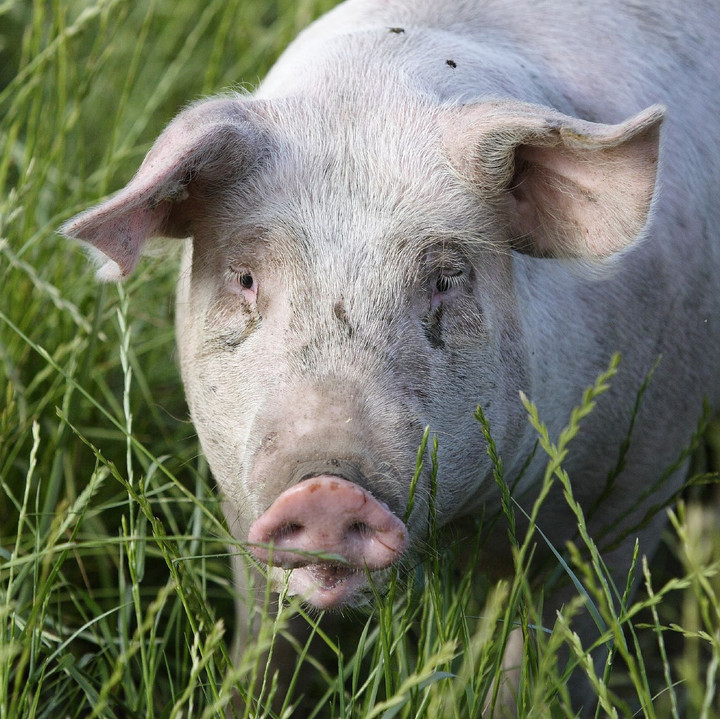
+
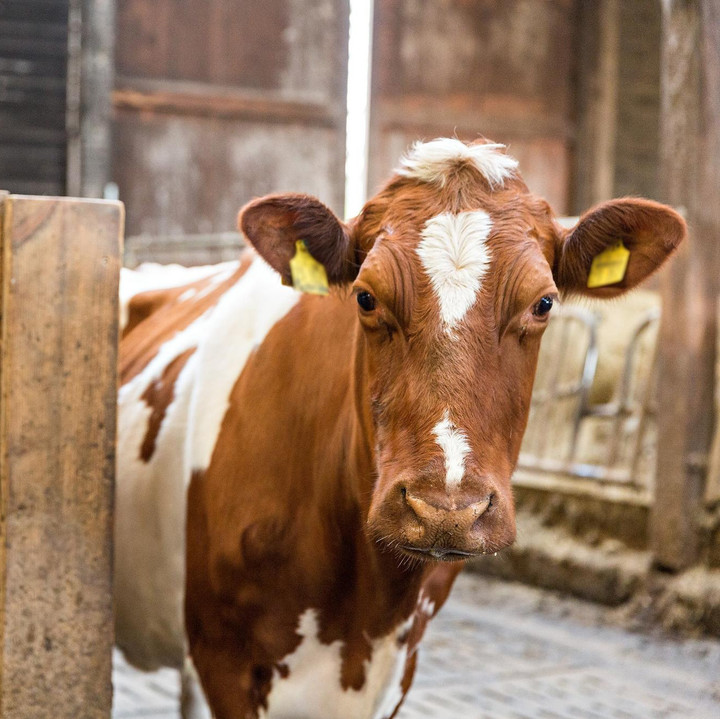
+
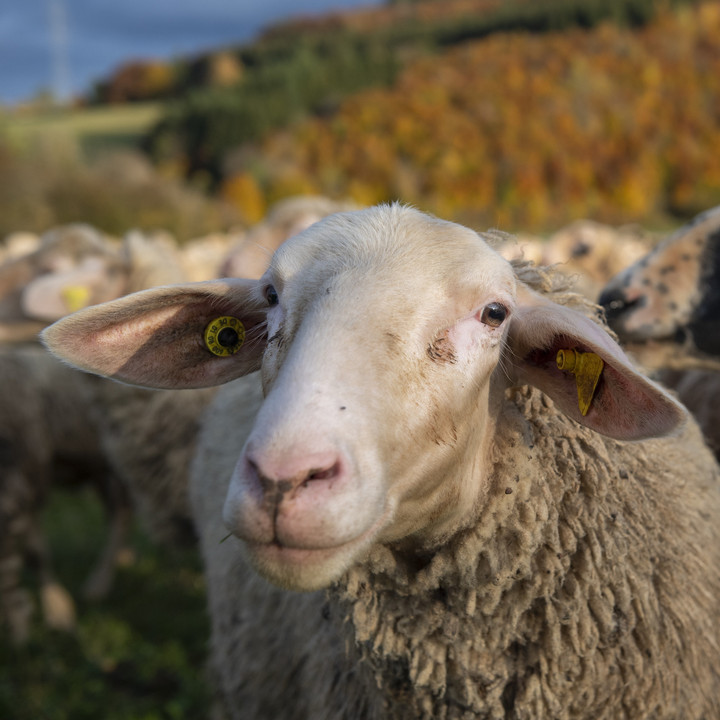
+

+

+
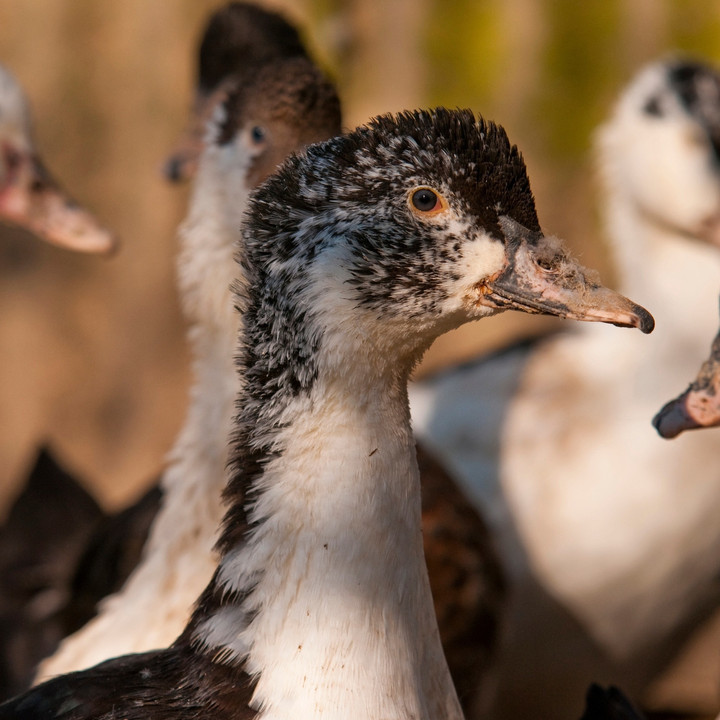
+

+
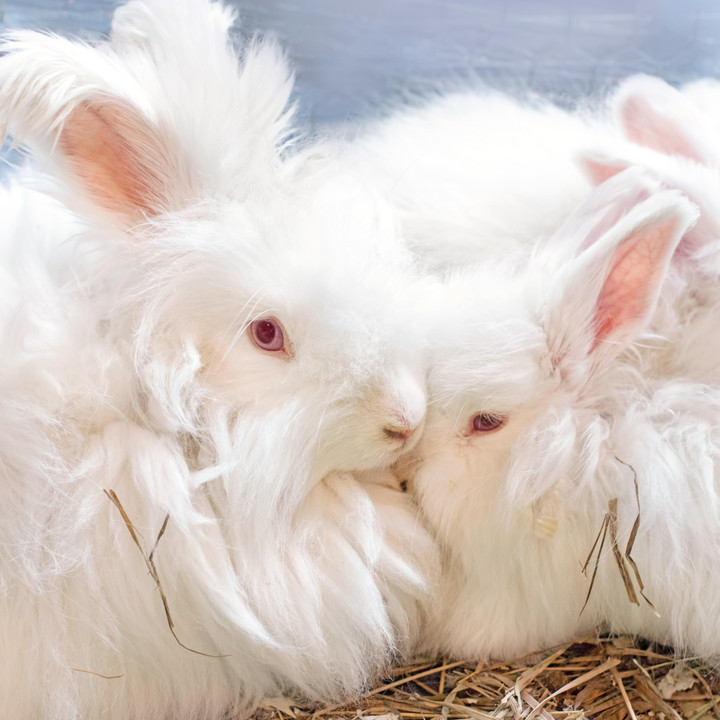
+
* More information about each cruel practice can be found by clicking on the infographics
Pigs
- High-concentrate feeding
- Keeping of sows in crates
- Torture breeding
- Fully slatted flooring
- Live Animal Transport
- Mutilations
- Cruel slaughter methods
- Separation of piglets from their mother
- Extreme confinement indoors

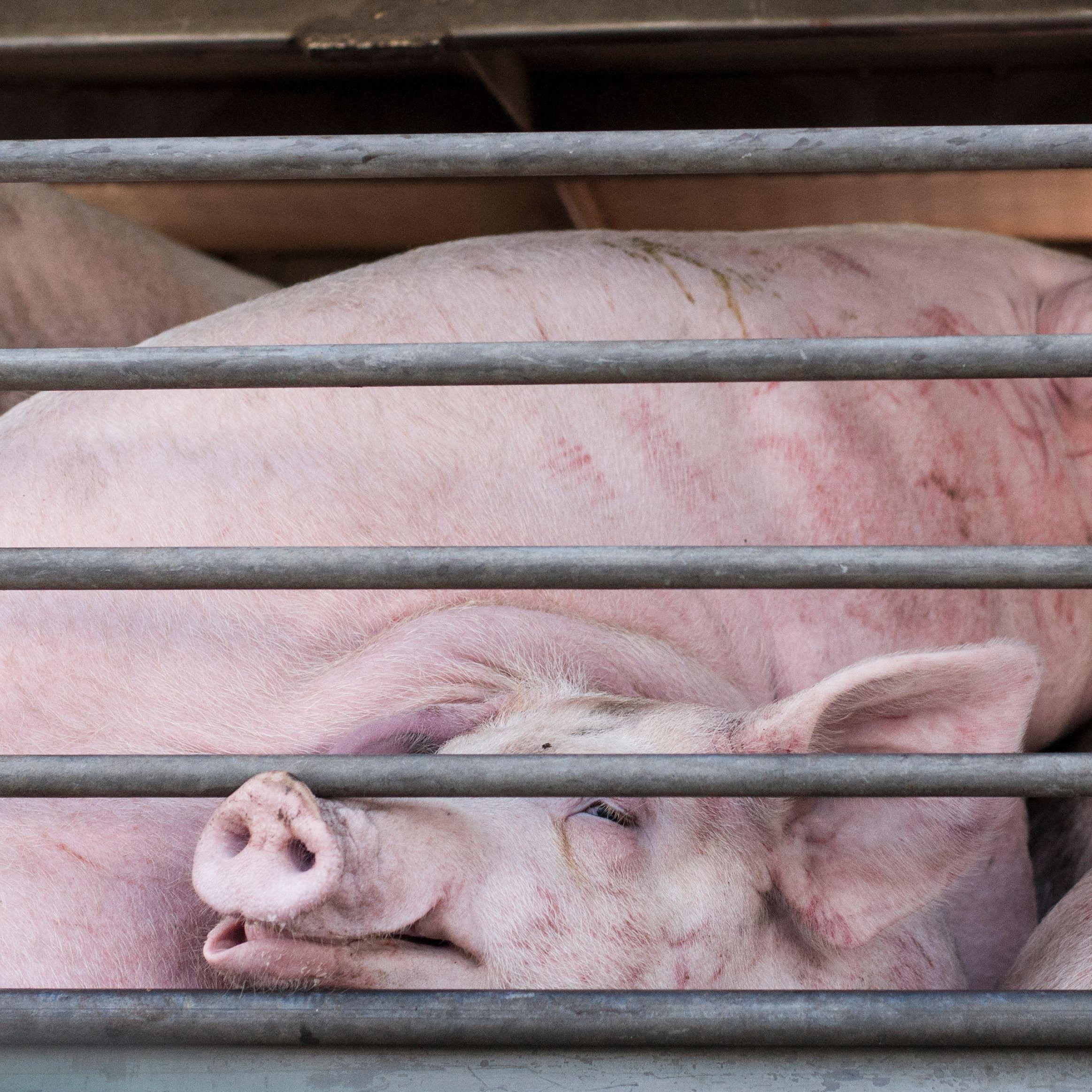
Every year 35 million pigs are transported across borders within and to outside the EU. Worldwide they are often transported cross border over long distances for several days and weeks in disastrous conditions, leading to fear, stress, overheating, injuries and even death. Read all about our transport work here.

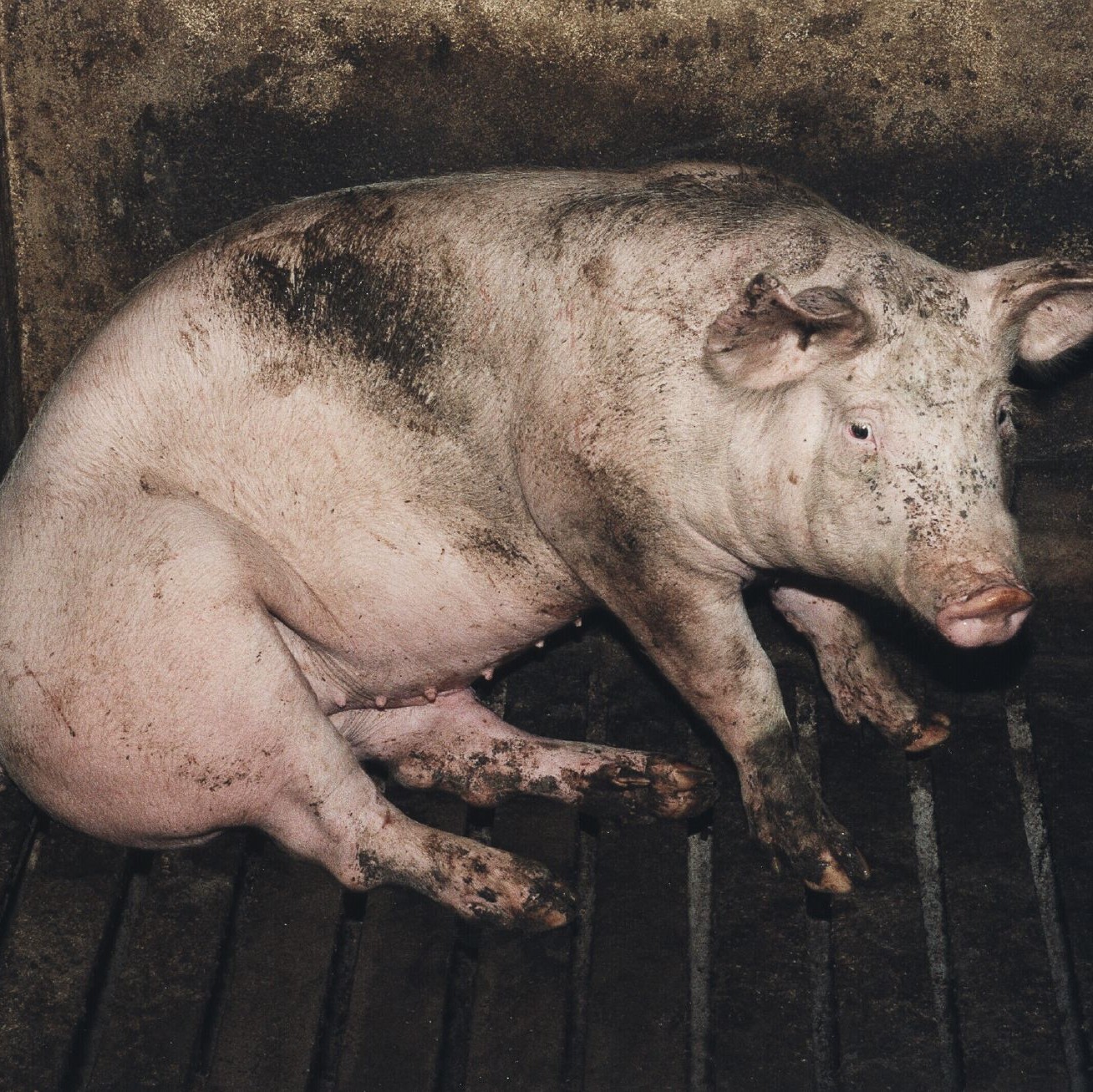
Pigs need a soft lying area. But instead of giving them a deep littered lying area, pigs are mostly kept on concrete fully slatted floors without any bedding. High levels of ammonia are common in such stables as faeces and urine fall through the slats and remain underneath the animal's laying area. Lung damages and inflammations of the joints and hoofs, calluses, and lameness are the most common visible diseases of inappropriate animal husbandry systems, such as fully slatted floors.


Painful interventions, such as tail docking or castration, are carried out on pigs, mostly without anaesthesia and pain relief – this is deemed necessary by the industry to mitigate the adverse effects of poor husbandry and inappropriate keeping conditions. This needs to end. Keeping systems must be adapted to the animals needs and not vice versa. Read more about common mutilations of pigs here.


Most piglets get weaned at an early age of 21 or 28 days, outside the EU sometimes even at an age of 10 days. EU organic farms legislation provides a minimum weaning age of at least 40 days. One of the problems of weaning before 40 days is that the immune system of the piglets is not fully established. Along with the abrupt and stressful event, this makes the piglets more susceptible to illness. Read more about the life cycle of sows and their piglets here.

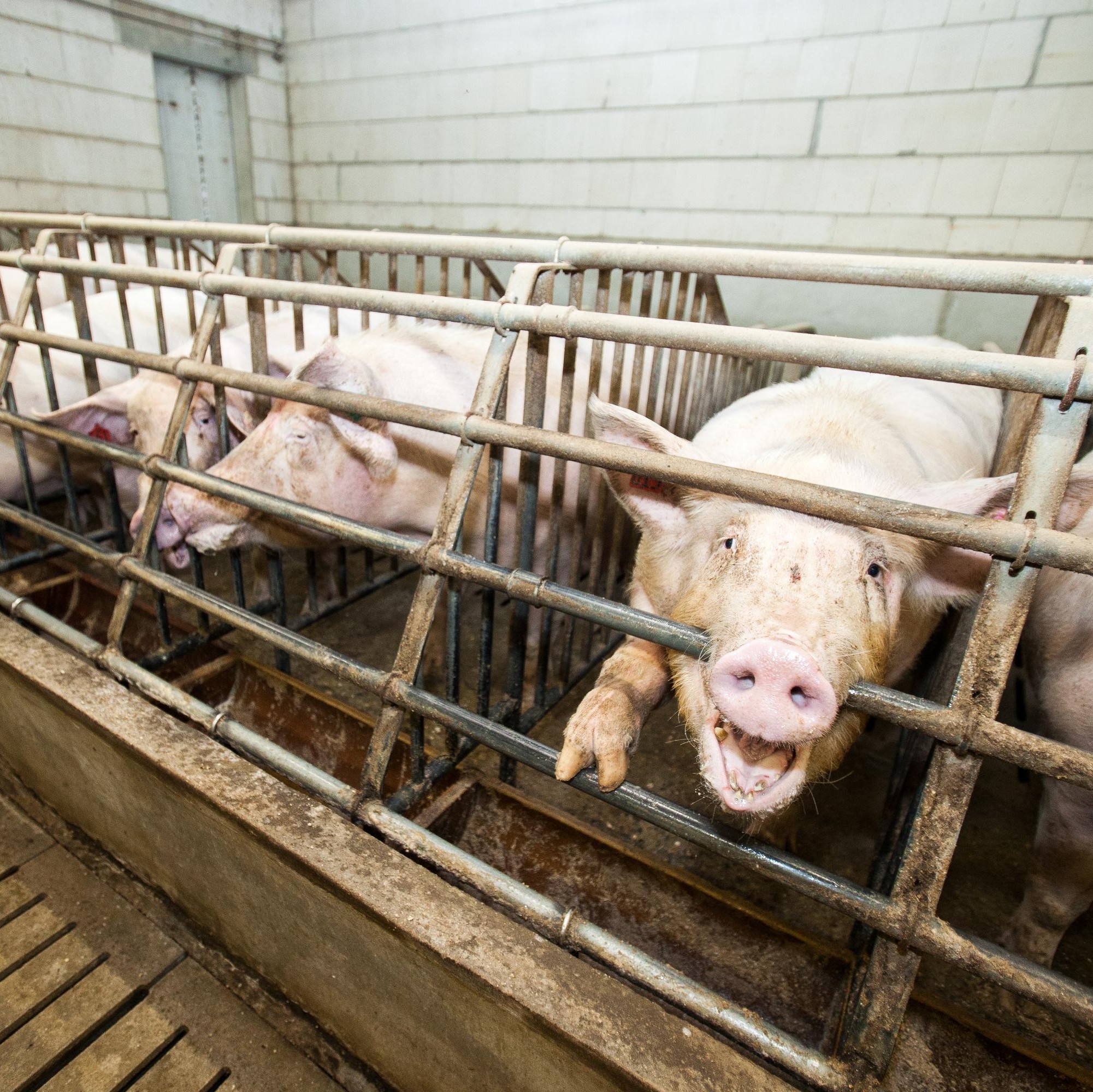
To compensate for high energy needs due to expected weight gain, animals are fed with a highly intensive concentrate feed, often on a liquid basis. As omnivores pigs need a varied diet, including roughage such as silage and hay. The one-sided concentrate feed causes health problems, such as stomach ulcers.


In most husbandry types, pigs neither see the sun nor get the possibility to root in the ground. They are kept without any outdoor climatic stimuli. Indoors they need to live in extreme confinement, suffering under high stocking densities, insufficient space and lacking enrichment. This often leads to severe behavioural disorders (e.g. tail biting).

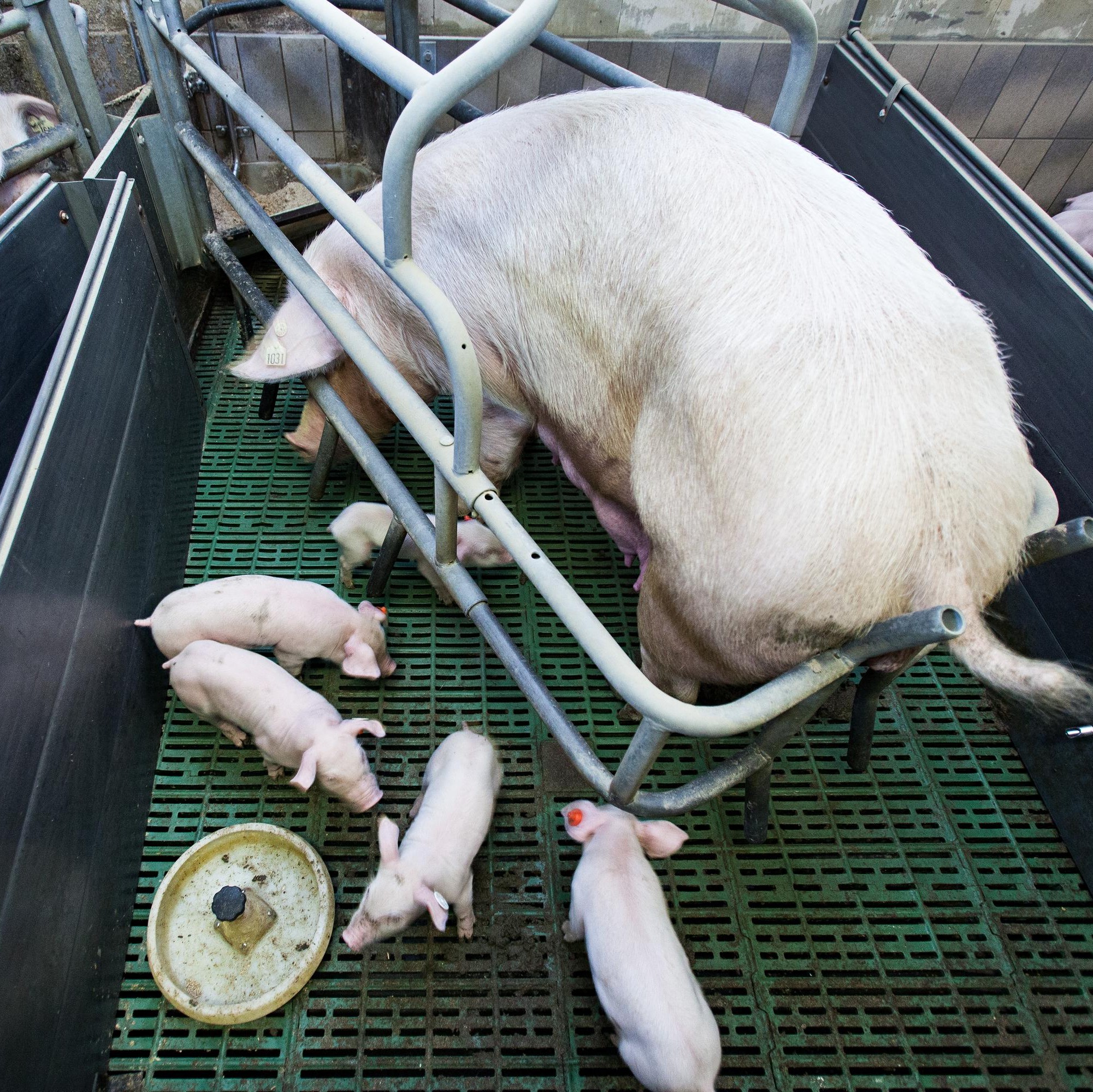
Intensive livestock farming does not take the natural instincts of pigs into account.
Sows in factory farming spend half of their lives (in some countries even their whole life) in tight-fitting metal cages which are supposedly preventing the sow from accidentally crushing the piglets after giving birth. But the real reason is economic – producing as many pigs as possible in the shortest possible time, in the smallest possible space. Read more about it here.


Various animal welfare issues lead to severe suffering of the animals during the slaughter process. Read more about it here.
Pigs are often transported cross border over long distances for slaughter, for purely economic reasons due to cheap slaughter conditions. Read more about EU slaughter regulations here.


Breeding for a high lean meat content as well as high daily weight gains lead to disorders of the cardiovascular system and pathological joint changes in these intelligent animals. Read more about torture breeding here.



Most piglets get weaned at an early age of 21 or 28 days, outside the EU sometimes even at an age of 10 days. EU organic farms legislation provides a minimum weaning age of at least 40 days. One of the problems of weaning before 40 days is that the immune system of the piglets is not fully established. Along with the abrupt and stressful event, this makes the piglets more susceptible to illness. Read more about the life cycle of sows and their piglets here.


Painful interventions, such as tail docking or castration, are carried out on pigs, mostly without anaesthesia and pain relief – this is deemed necessary by the industry to mitigate the adverse effects of poor husbandry and inappropriate keeping conditions. This needs to end. Keeping systems must be adapted to the animals needs and not vice versa. Read more about common mutilations of pigs here.


To compensate for high energy needs due to expected weight gain, animals are fed with a highly intensive concentrate feed, often on a liquid basis. As omnivores pigs need a varied diet, including roughage such as silage and hay. The one-sided concentrate feed causes health problems, such as stomach ulcers.


Intensive livestock farming does not take the natural instincts of pigs into account.
Sows in factory farming spend half of their lives (in some countries even their whole life) in tight-fitting metal cages which are supposedly preventing the sow from accidentally crushing the piglets after giving birth. But the real reason is economic – producing as many pigs as possible in the shortest possible time, in the smallest possible space. Read more about it here.

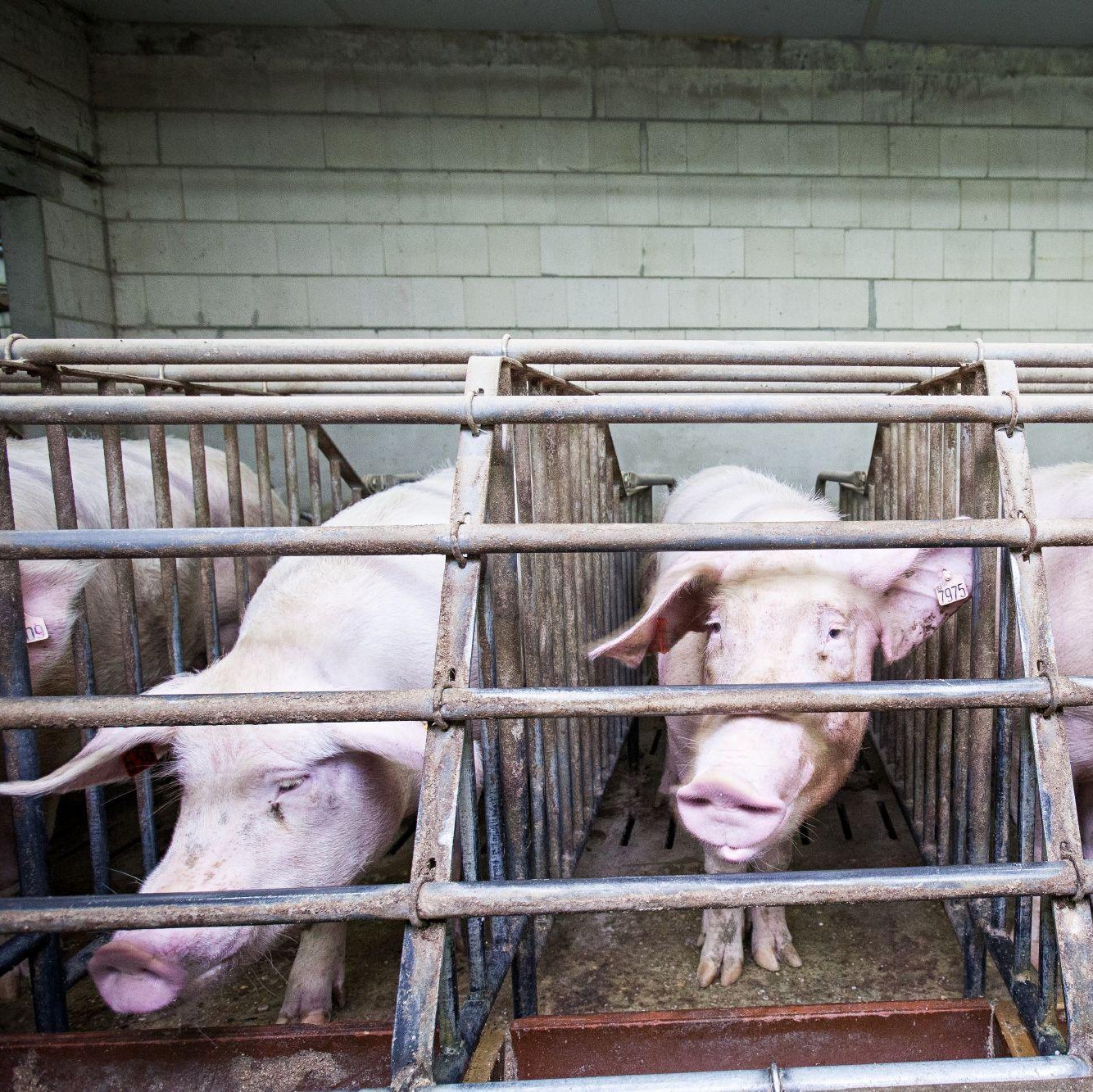
In most husbandry types, pigs neither see the sun nor get the possibility to root in the ground. They are kept without any outdoor climatic stimuli. Indoors they need to live in extreme confinement, suffering under high stocking densities, insufficient space and lacking enrichment. This often leads to severe behavioural disorders (e.g. tail biting).


Breeding for a high lean meat content as well as high daily weight gains lead to disorders of the cardiovascular system and pathological joint changes in these intelligent animals. Read more about torture breeding here.


Pigs need a soft lying area. But instead of giving them a deep littered lying area, pigs are mostly kept on concrete fully slatted floors without any bedding. High levels of ammonia are common in such stables as faeces and urine fall through the slats and remain underneath the animal's laying area. Lung damages and inflammations of the joints and hoofs, calluses, and lameness are the most common visible diseases of inappropriate animal husbandry systems, such as fully slatted floors.


Every year 35 million pigs are transported across borders within and to outside the EU. Worldwide they are often transported cross border over long distances for several days and weeks in disastrous conditions, leading to fear, stress, overheating, injuries and even death. Read all about our transport work here.


Various animal welfare issues lead to severe suffering of the animals during the slaughter process. Read more about it here.
Pigs are often transported cross border over long distances for slaughter, for purely economic reasons due to cheap slaughter conditions. Read more about EU slaughter regulations here.

Cattle
- Mutilations
- High-concentrate feeding
- Young animals kept in isolation
- Tethering of the animals
- Torture breeding
- Fully slatted flooring
- Separation of calf and mother
- Live Animal Transport
- Cruel slaughter methods


Dairy cattle are bred for extremely high milk yield, which brings the cows to their physical limits: They suffer from life-threatening metabolic disorders and painful udder infections. In beef cattle, the prevailing breeding objectives, such as good muscling and high daily weight gains directly cause health problems. Read more about torture breeding here.


Cattle are kept in many production systems on fully slatted floors without bedding and without a separate lying area. Inflammation of the joints and hoofs, calluses, and lameness are the most common visible diseases of inappropriate animal husbandry systems, such as fully slatted floors. Read more about the average life of beef cattle here.

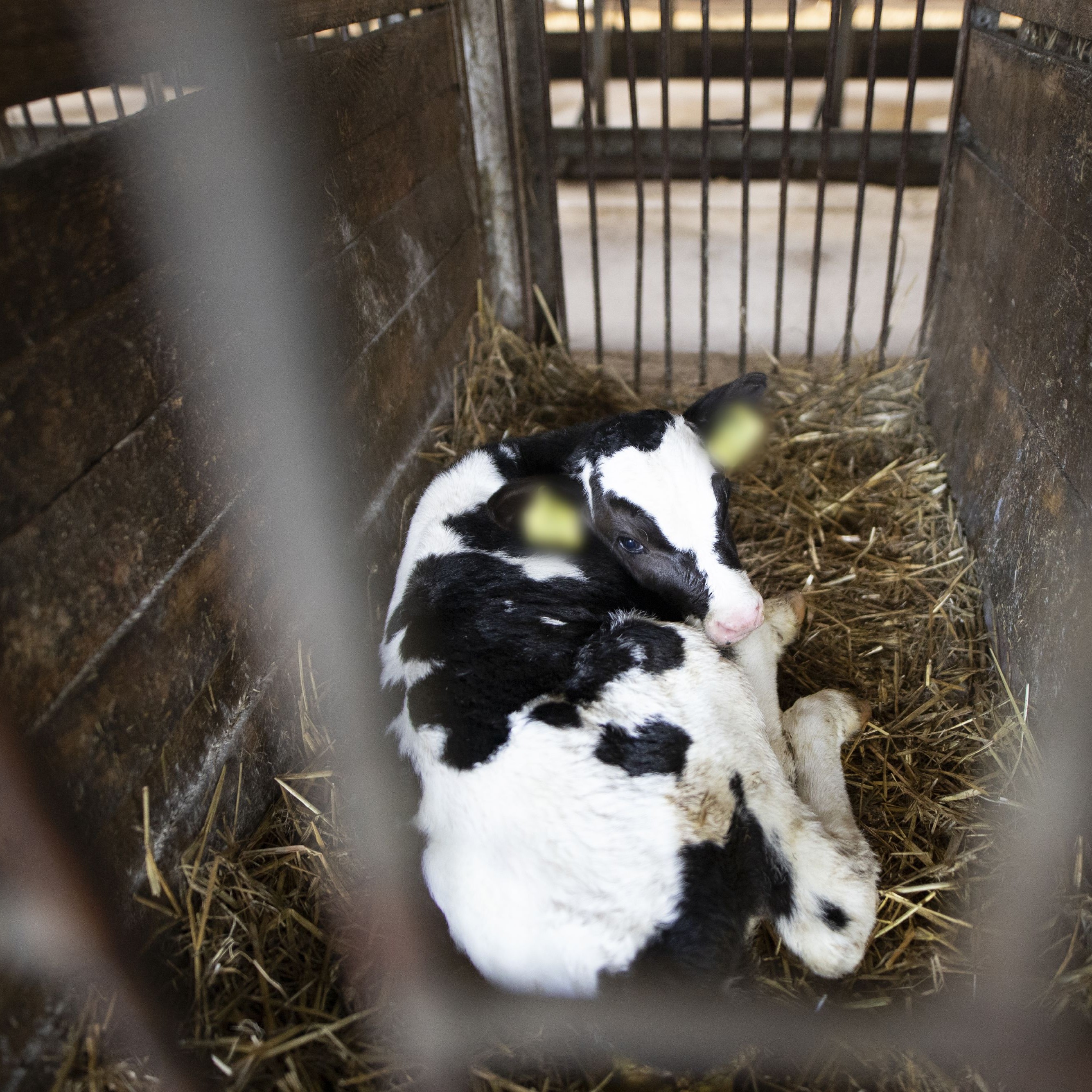
To sell as much milk as possible, the cow and calf are separated from each other after a few hours or days and the calf is then usually given a bought-in milk substitute. This makes the calf more susceptible to illness, which, along with the stressful events reducing their immune response, giving many calves a life-threatening diarrhoea, resulting in a high mortality rate. Read more about the suffering of calves here and about mother-bonded rearing as alternative solution here.


Every year 5.3 million cattle are transported across borders within the EU and to third countries. They are often transported for several days and weeks in disastrous conditions, leading to enormous fear, stress, overheating, injuries and even death. Cattle are often transported by road and by sea to countries with no animal welfare regulations. Read more about sea transports here. Read all about our transport work here.


Painful interventions, such as disbudding/dehorning or castration, are carried out on cattle, mostly without anaesthesia and pain relief – this is deemed necessary by the industry to mitigate the adverse effects of poor husbandry and inappropriate keeping conditions. This needs to end. Keeping systems must be adapted to the animals needs and not vice versa. Read more about common mutilations of cattle here.


Various animal welfare issues lead to severe suffering of the animals during the slaughter process. Read more about it here.
Cattle are often transported to countries allowing inappropriate slaughter methods without prior stunning. Read more about it here. More detailed information you will find here (pp.96)

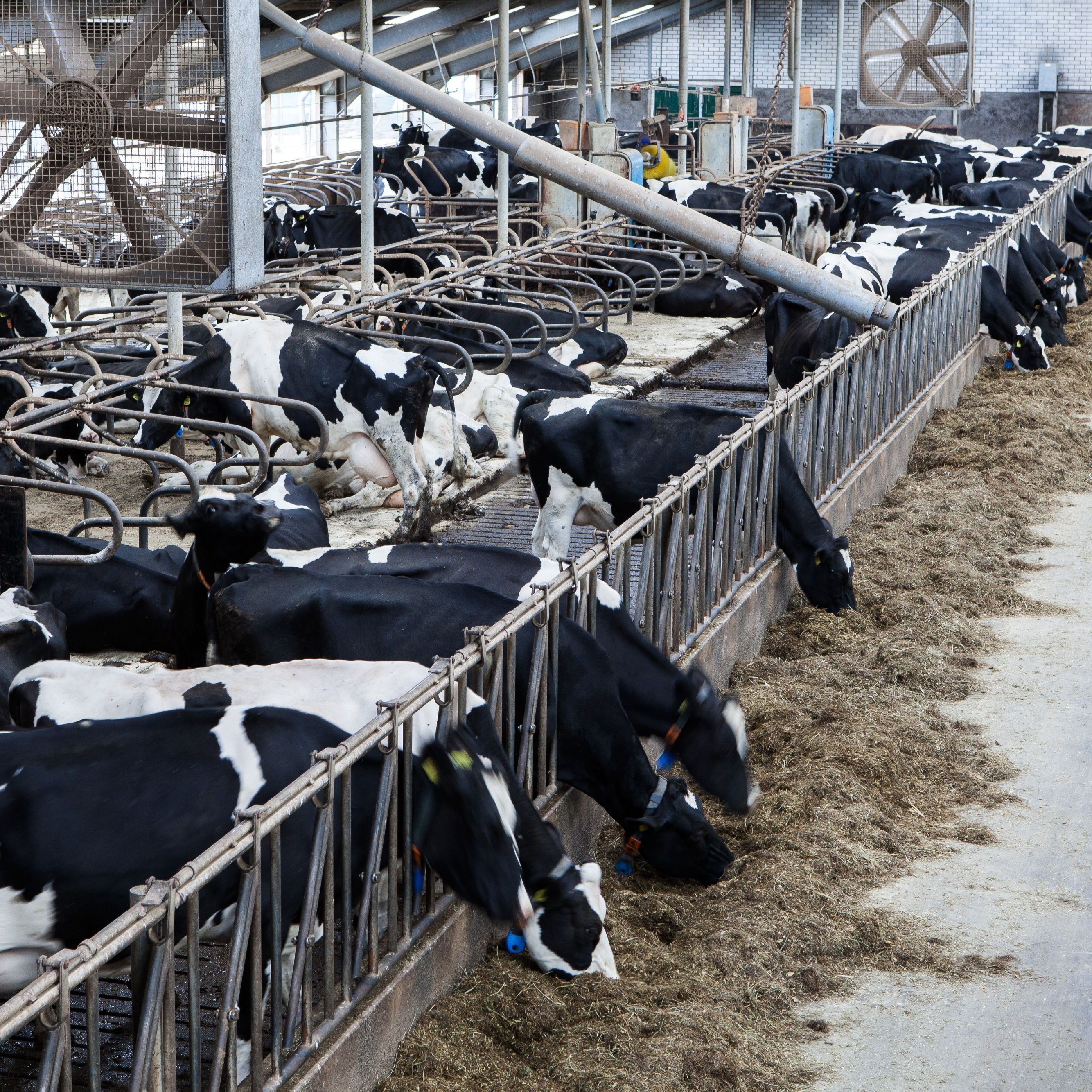
High yielding cattle are fed with a high concentrate feed in order to maintain the unnatural production which causes problems in terms of physiological and mental health (when not being given the possibility to graze and ruminate).

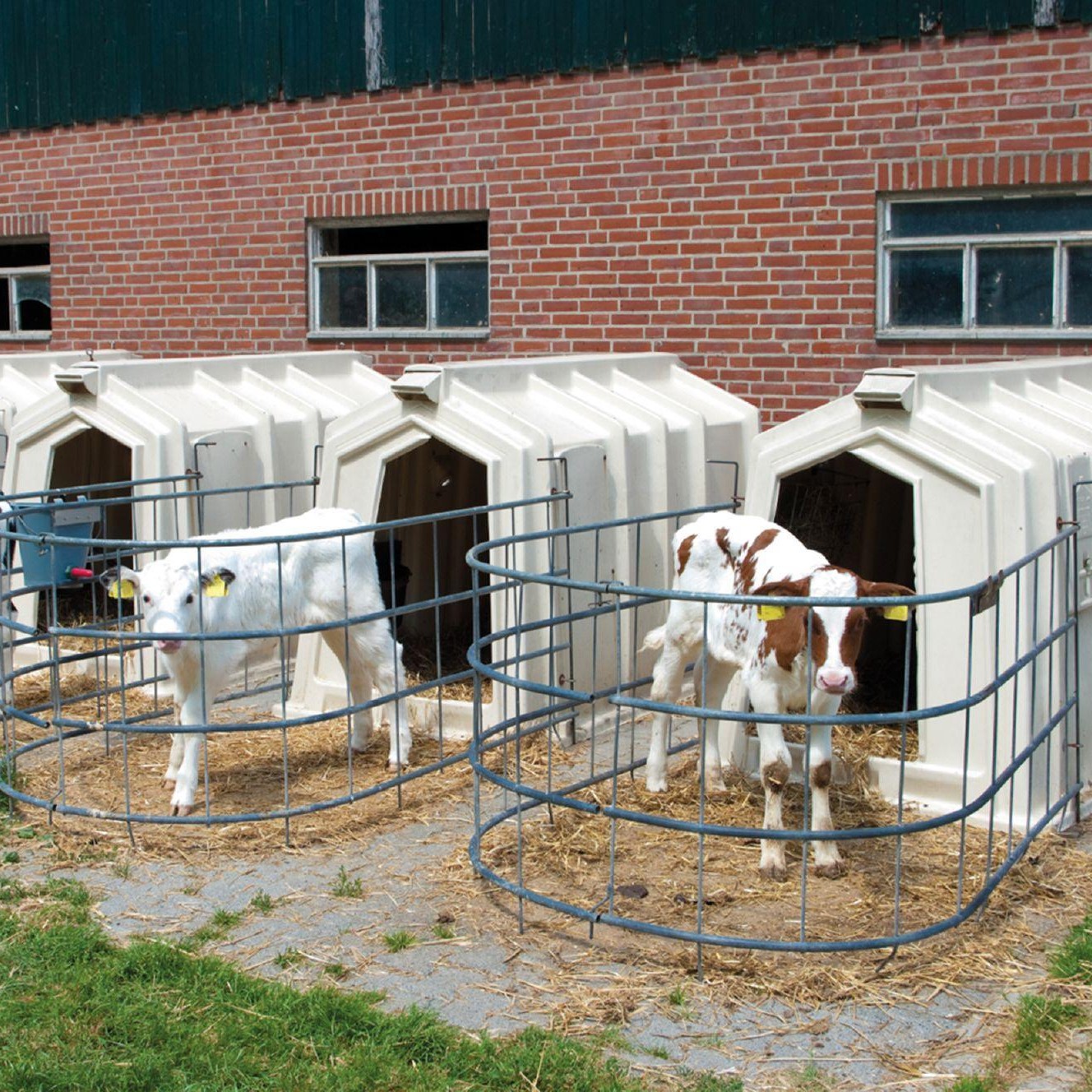
After being separated from their mothers almost immediately after birth, more than 60% of all European dairy calves are individually housed during their first eight weeks. Read more about it here.

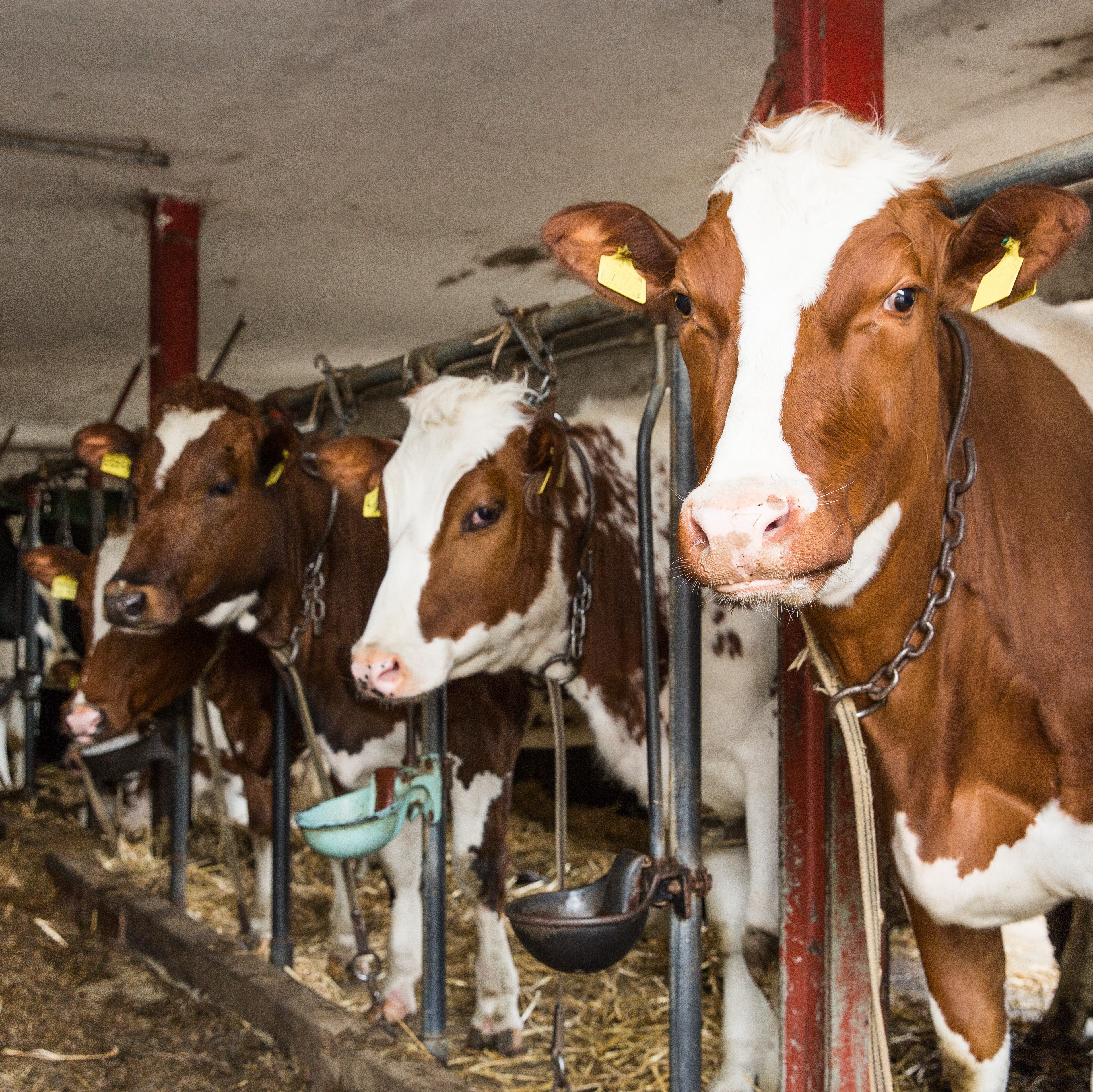
Tethering of cattle severely restricts typical behaviour such as movement, social behaviour, comfort behaviour and resting behaviour. The animals have no possibility to determine their behaviour based on needs nor can they seek out preferred social partners and are unconditionally exposed to their housing environment. All of this has a lot of negative effects on their mental state.



High yielding cattle are fed with a high concentrate feed in order to maintain the unnatural production which causes problems in terms of physiological and mental health (when not being given the possibility to graze and ruminate).


After being separated from their mothers almost immediately after birth, more than 60% of all European dairy calves are individually housed during their first eight weeks. Read more about it here.


Tethering of cattle severely restricts typical behaviour such as movement, social behaviour, comfort behaviour and resting behaviour. The animals have no possibility to determine their behaviour based on needs nor can they seek out preferred social partners and are unconditionally exposed to their housing environment. All of this has a lot of negative effects on their mental state.


Dairy cattle are bred for extremely high milk yield, which brings the cows to their physical limits: They suffer from life-threatening metabolic disorders and painful udder infections. In beef cattle, the prevailing breeding objectives, such as good muscling and high daily weight gains directly cause health problems. Read more about torture breeding here.


Cattle are kept in many production systems on fully slatted floors without bedding and without a separate lying area. Inflammation of the joints and hoofs, calluses, and lameness are the most common visible diseases of inappropriate animal husbandry systems, such as fully slatted floors. Read more about the average life of beef cattle here.


To sell as much milk as possible, the cow and calf are separated from each other after a few hours or days and the calf is then usually given a bought-in milk substitute. This makes the calf more susceptible to illness, which, along with the stressful events reducing their immune response, giving many calves a life-threatening diarrhoea, resulting in a high mortality rate. Read more about the suffering of calves here and about mother-bonded rearing as alternative solution here.

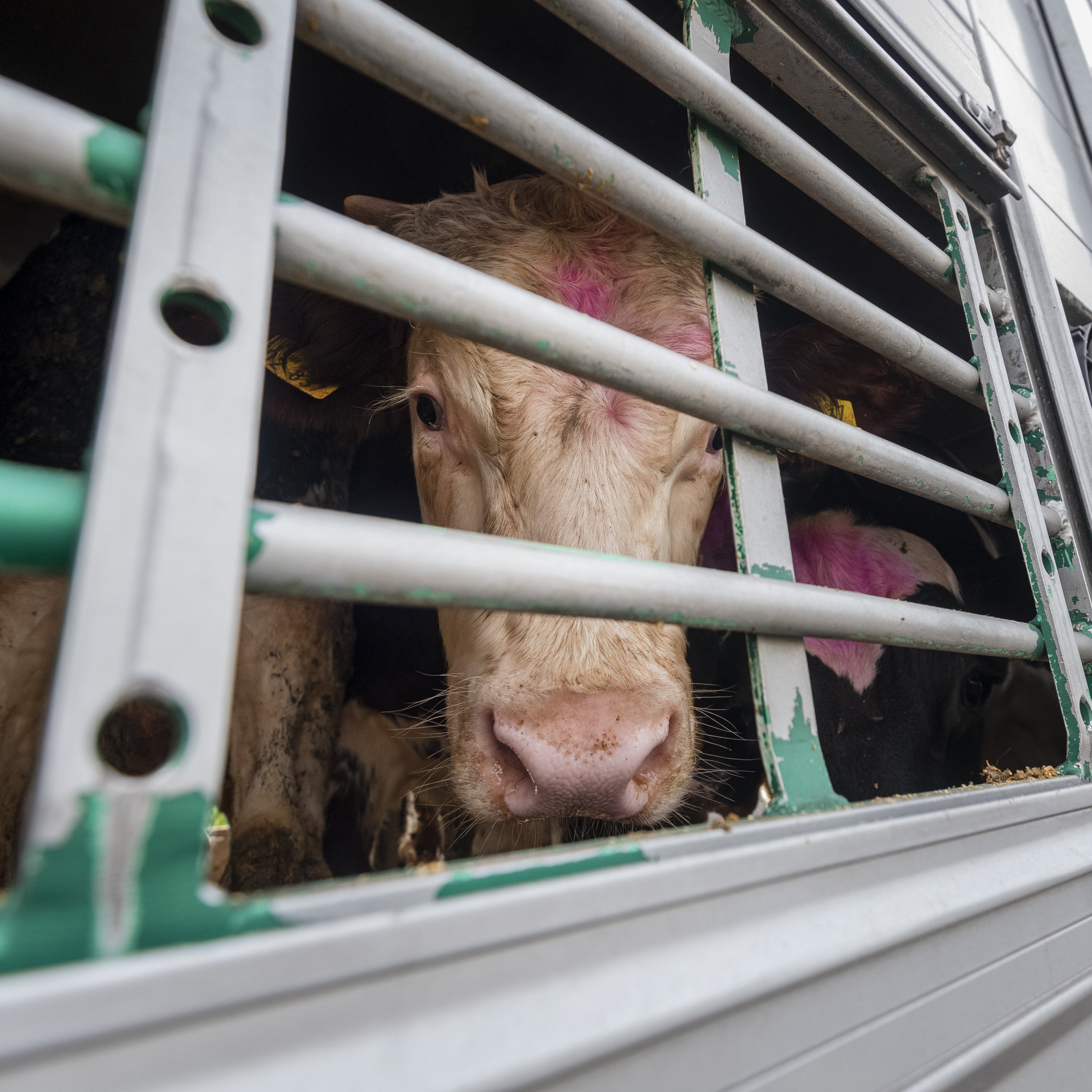
Every year 5.3 million cattle are transported across borders within the EU and to third countries. They are often transported for several days and weeks in disastrous conditions, leading to enormous fear, stress, overheating, injuries and even death. Cattle are often transported by road and by sea to countries with no animal welfare regulations. Read more about sea transports here. Read all about our transport work here.


Various animal welfare issues lead to severe suffering of the animals during the slaughter process. Read more about it here.
Cattle are often transported to countries allowing inappropriate slaughter methods without prior stunning. Read more about it here. More detailed information you will find here (pp.96)


Painful interventions, such as disbudding/dehorning or castration, are carried out on cattle, mostly without anaesthesia and pain relief – this is deemed necessary by the industry to mitigate the adverse effects of poor husbandry and inappropriate keeping conditions. This needs to end. Keeping systems must be adapted to the animals needs and not vice versa. Read more about common mutilations of cattle here.

Sheep
- Mutilations
- Separation of lambs from their mothers (dairy sheep)
- Live Lamb Cutting (Mulesing)
- Bad handling during shearing
- Cruel slaughter methods
- Live Animal Transport
- Torture breeding
- High-concentrate feeding


Various animal welfare issues lead to severe suffering of the animals during the slaughter process. Read more about it here.
Sheep are often transported to countries allowing inappropriate slaughter methods without prior stunning. Read more about it here. More detailed information you will find here (pp.96).

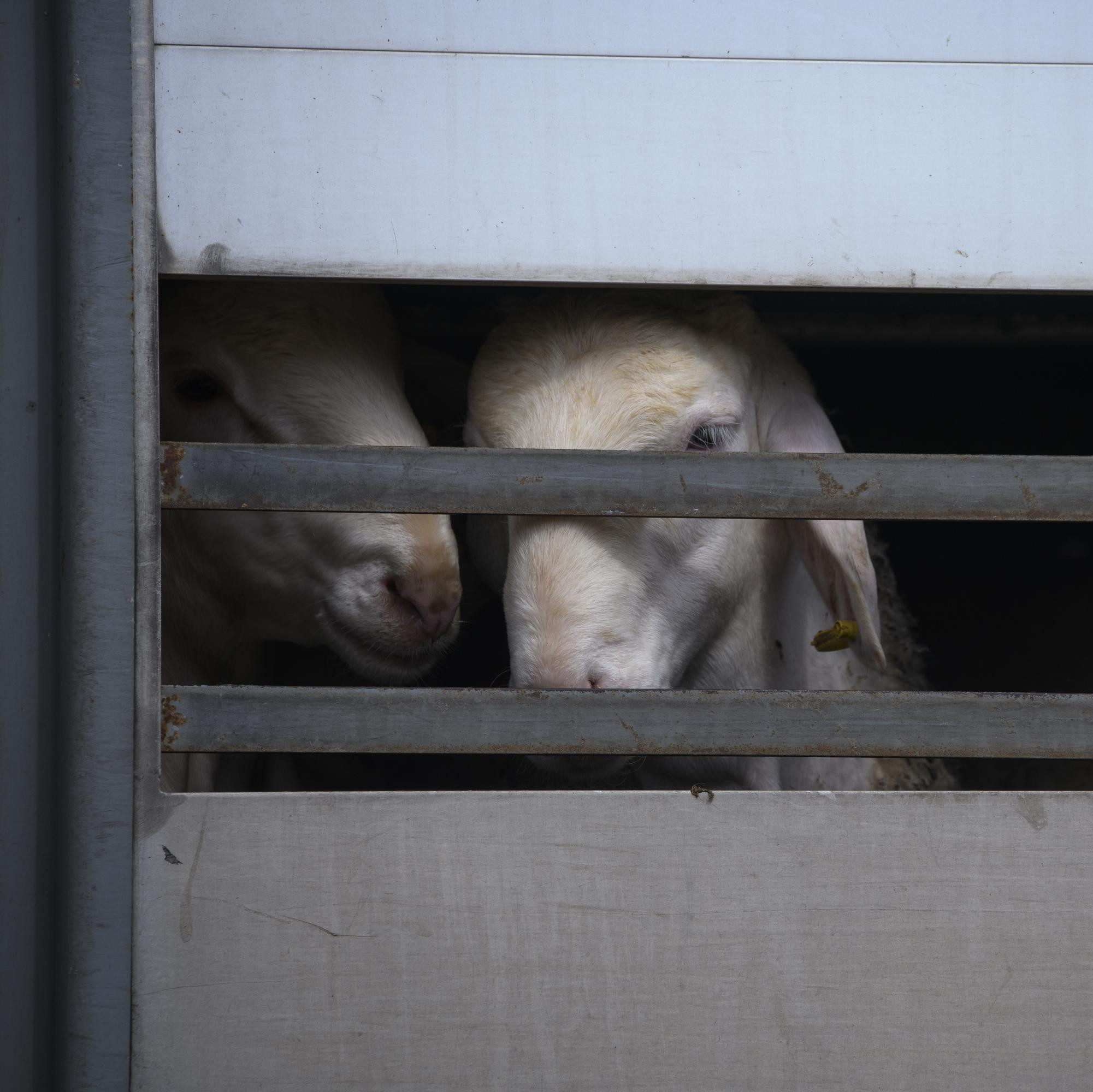
Every year 5.6 million sheep and goats are transported across borders within the EU and to third countries. They are often transported for several days and weeks in disastrous conditions, leading to enormous fear, stress, overheating, injuries and even death. Sheep are often transported overseas, read more about sea transports here. Read all about our transport work here.

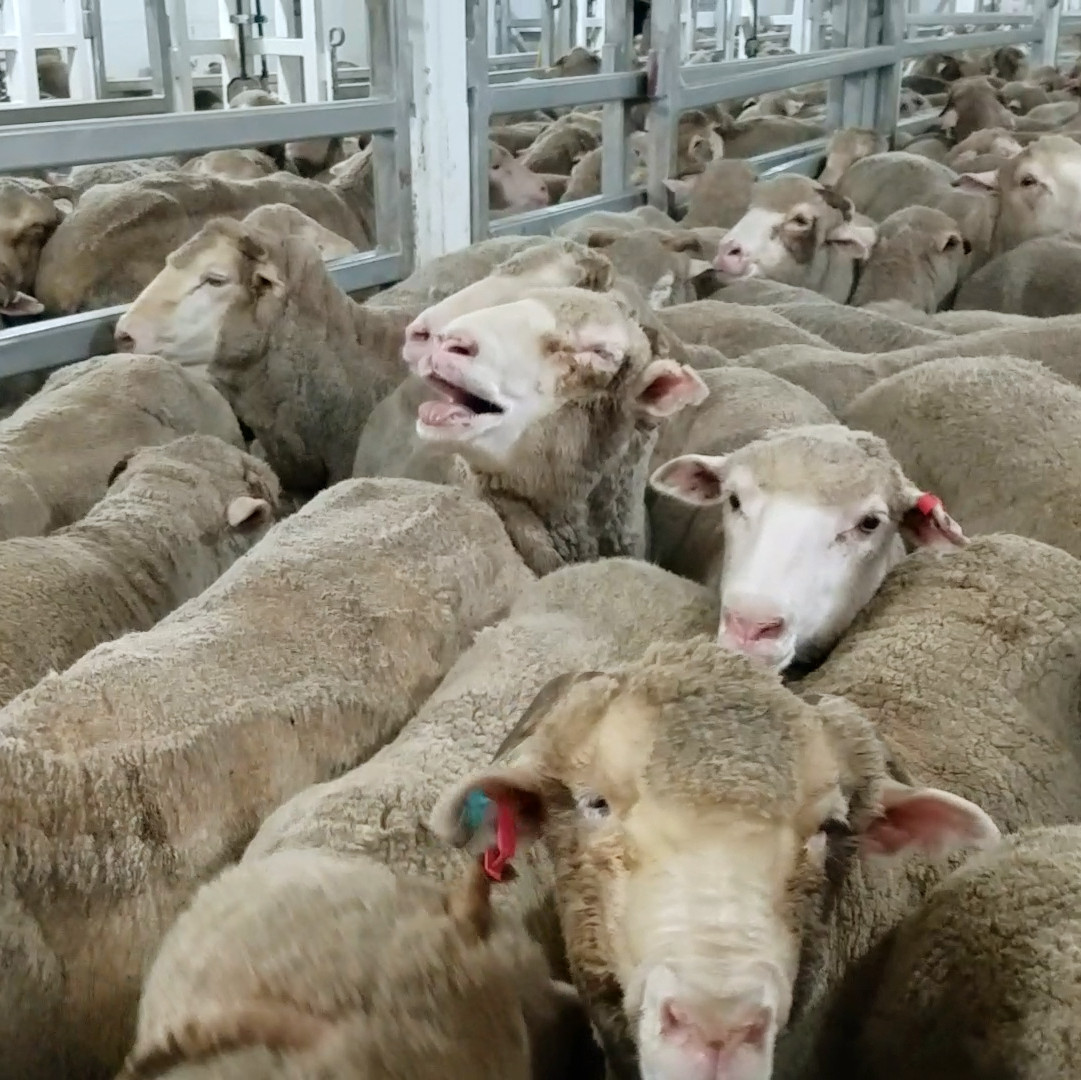
Painful interventions, such as live lamb cutting or castration, are carried out on sheep, mostly without anaesthesia and pain relief – this is deemed necessary by the industry to mitigate the adverse effects of poor husbandry and inappropriate keeping conditions. This needs to end. Keeping systems must be adapted to the animals needs and not vice versa. Read more about common mutilations of sheep here.

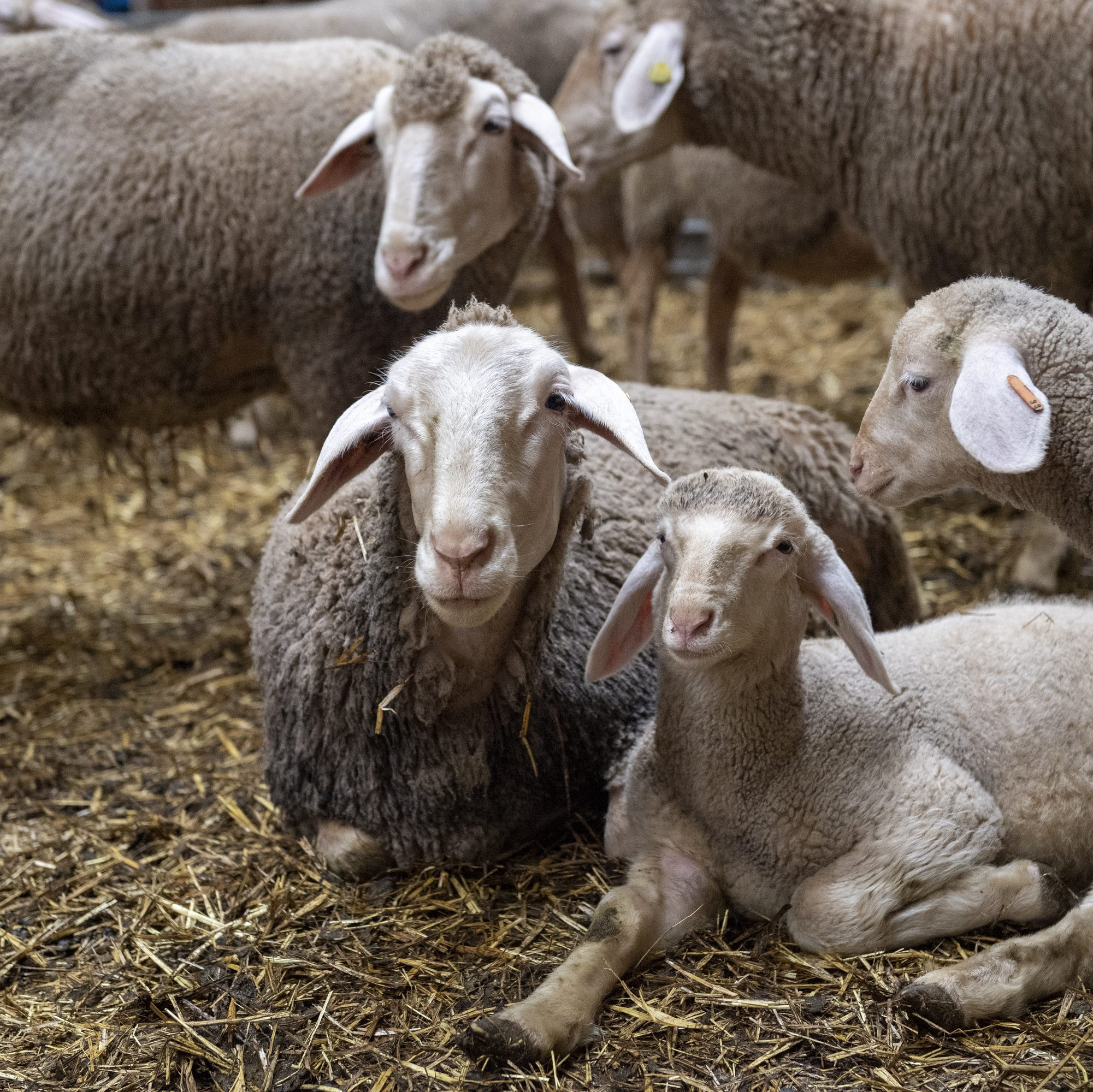
Lambs are commonly separated from their mothers early in life for purely economic reasons. Farmed animals usually form strong bonds with their offspring but in many cases, they are not able to act out their natural instinctive behaviour due to how they are kept and raised for human utilisation.


High yielding sheep are fed with a high concentrate feed to maintain the unnatural production which causes problems in terms of physiological and mental health (when not being given the possibility to graze and ruminate).


Live lamb cutting is a common procedure during which strips of skin around a lamb's breech and tail are cut with shears, usually without any anaesthesia or adequate pain relief. Live lamb cutting is done on 80% of Merino wool producing sheep. Read more about this topic and our work.

Due to the widely spread myth that more wrinkly sheep grow more, and higher quality wool, Merino sheep are intentionally bred to have excessive amounts of skin (transitioning from plain-bodied to wrinkled sheep). This makes them highly susceptible to dag and flystrike and compromises their welfare and health severely. Read more about torture breeding here and about the associated live lamb cutting in the next section.

Worldwide farmed animals are often handled by persons who don’t see them as sentient beings, which leads to the animals being treated roughly and not uncommonly even brutally. Additionally, during shearing, transport and slaughter the rough handling causes a lot of fear and suffering. This can result in serious injuries and pain for the animals.
Over a million sheep suffer greatly as a part of the textile industry. Read more about what’s behind your sheep wool sweaters here.



Lambs are commonly separated from their mothers early in life for purely economic reasons. Farmed animals usually form strong bonds with their offspring but in many cases, they are not able to act out their natural instinctive behaviour due to how they are kept and raised for human utilisation.


High yielding sheep are fed with a high concentrate feed to maintain the unnatural production which causes problems in terms of physiological and mental health (when not being given the possibility to graze and ruminate).

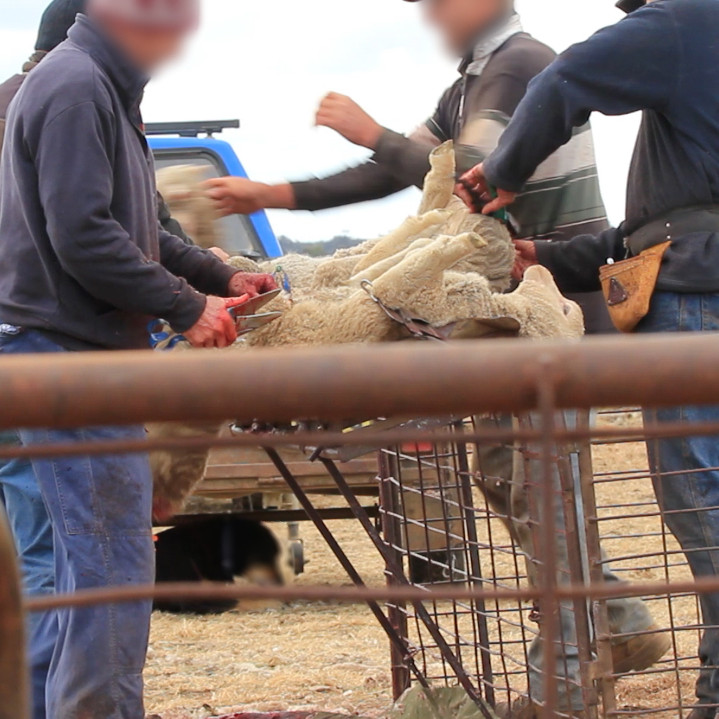
Live lamb cutting is a common procedure during which strips of skin around a lamb's breech and tail are cut with shears, usually without any anaesthesia or adequate pain relief. Live lamb cutting is done on 80% of Merino wool producing sheep. Read more about this topic and our work.

Due to the widely spread myth that more wrinkly sheep grow more, and higher quality wool, Merino sheep are intentionally bred to have excessive amounts of skin (transitioning from plain-bodied to wrinkled sheep). This makes them highly susceptible to dag and flystrike and compromises their welfare and health severely. Read more about torture breeding here and about the associated live lamb cutting in the next section.

Worldwide farmed animals are often handled by persons who don’t see them as sentient beings, which leads to the animals being treated roughly and not uncommonly even brutally. Additionally, during shearing, transport and slaughter the rough handling causes a lot of fear and suffering. This can result in serious injuries and pain for the animals.
Over a million sheep suffer greatly as a part of the textile industry. Read more about what’s behind your sheep wool sweaters here.


Various animal welfare issues lead to severe suffering of the animals during the slaughter process. Read more about it here.
Sheep are often transported to countries allowing inappropriate slaughter methods without prior stunning. Read more about it here. More detailed information you will find here (pp.96).


Every year 5.6 million sheep and goats are transported across borders within the EU and to third countries. They are often transported for several days and weeks in disastrous conditions, leading to enormous fear, stress, overheating, injuries and even death. Sheep are often transported overseas, read more about sea transports here. Read all about our transport work here.


Painful interventions, such as live lamb cutting or castration, are carried out on sheep, mostly without anaesthesia and pain relief – this is deemed necessary by the industry to mitigate the adverse effects of poor husbandry and inappropriate keeping conditions. This needs to end. Keeping systems must be adapted to the animals needs and not vice versa. Read more about common mutilations of sheep here.

Goats
- Mutilations
- Separation of kids from their mothers (dairy goats)
- Bad handling during shearing and combing in wool goats
- Cruel slaughter methods
- Live Animal Transport
- High-concentrate feeding
- Tethering of animals

Various animal welfare issues lead to severe suffering of the animals during the slaughter process. Read more about it here.
Goats are often transported to countries allowing inappropriate slaughter methods without prior stunning. Read more about it here.
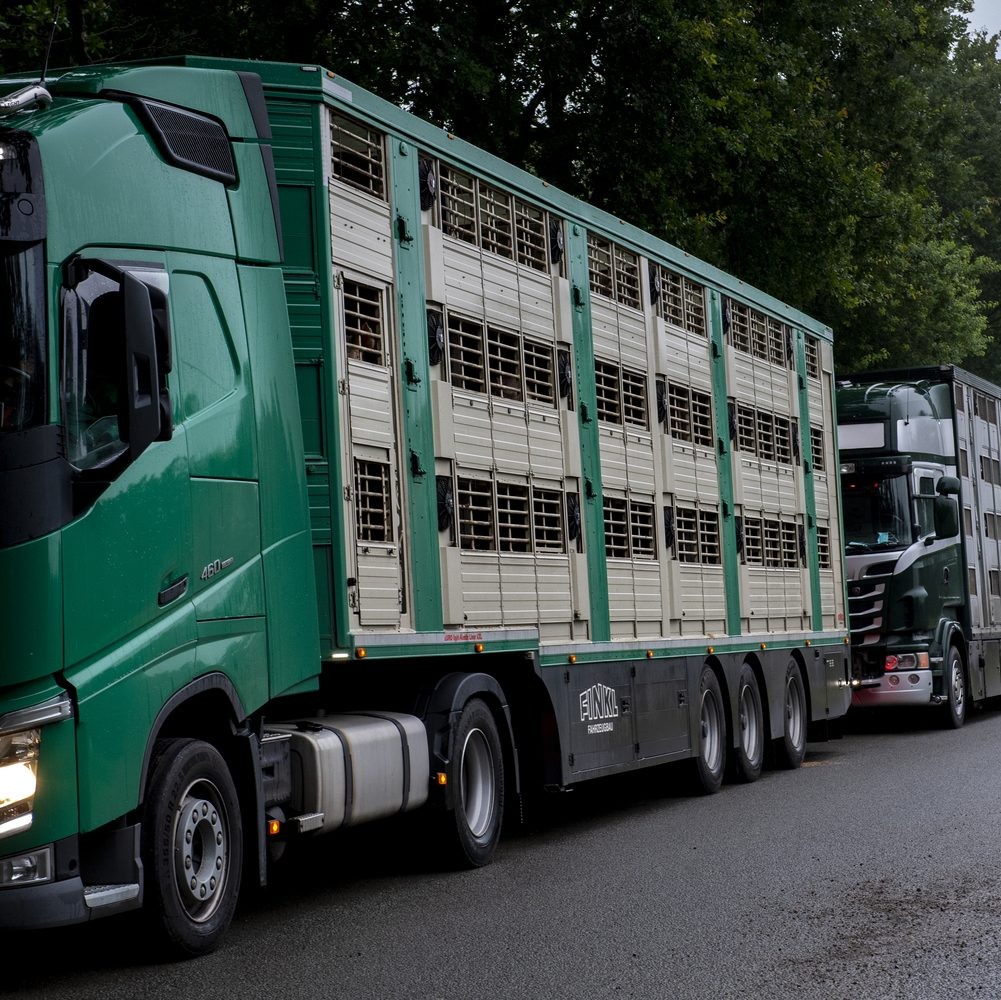
Every year 5.6 million sheep and goats are transported across borders within the EU and to third countries. They are often transported for several days and weeks in disastrous conditions, leading to enormous fear, stress, overheating, injuries and even death. Read all about our transport work here.

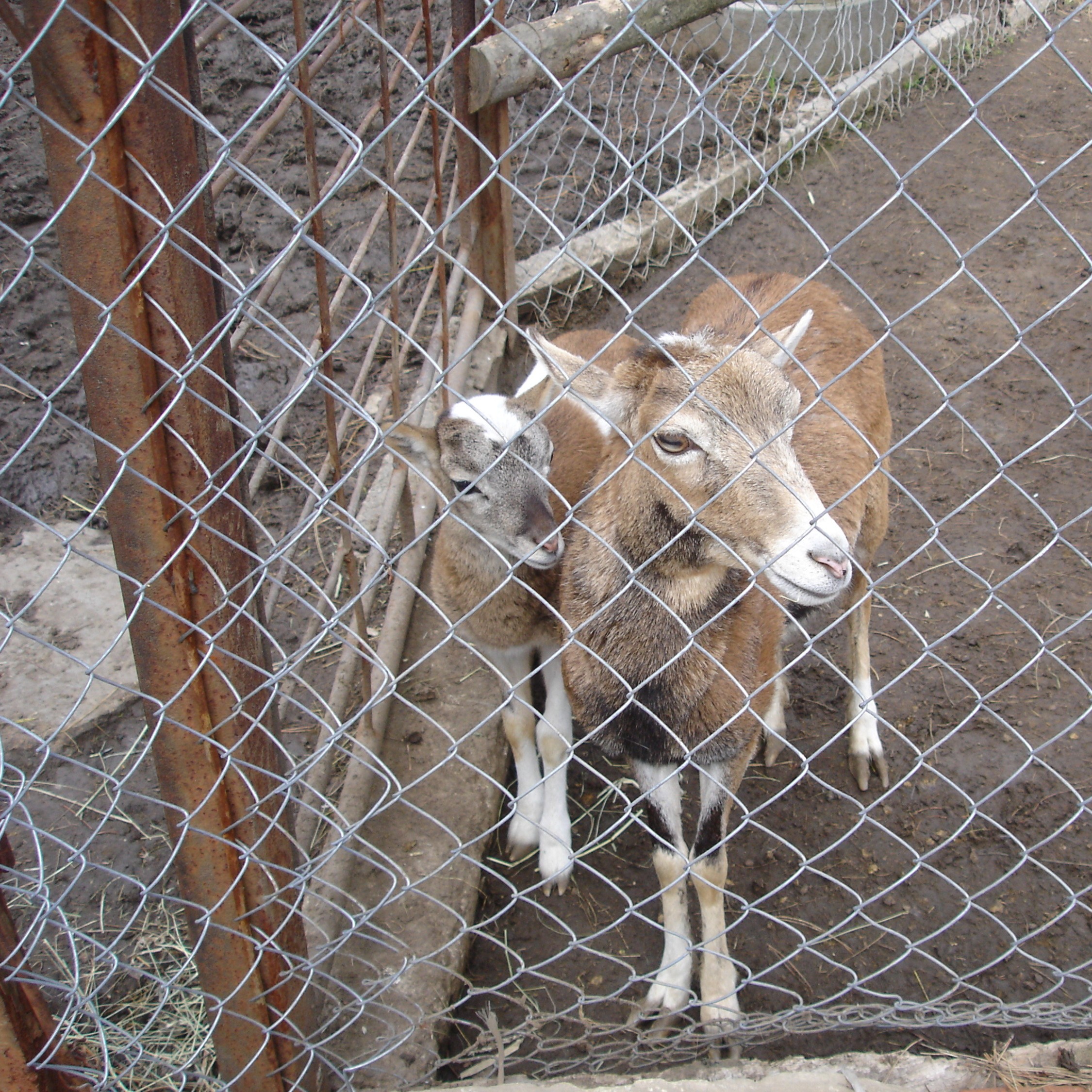
Painful interventions, such as disbudding/dehorning or castration, are carried out on goats, mostly without anaesthesia and pain relief – this is deemed necessary by the industry to mitigate the adverse effects of poor husbandry and inappropriate keeping conditions. This needs to end. Keeping systems must be adapted to the animals needs and not vice versa. Read more about common mutilations of goats here.


Tethering of farmed animals severely restricts typical behaviour such as movement, social interaction, comfort behaviour and rest behaviour. The animals are not able to determine their activities based on need nor are able to seek out preferred social partners. All of this has a lot of negative effects on their wellbeing status.

High yielding goats are fed with a high concentrate feed to maintain the unnatural production which causes problems in terms of physiological and mental health (when not being given the possibility to graze and ruminate).
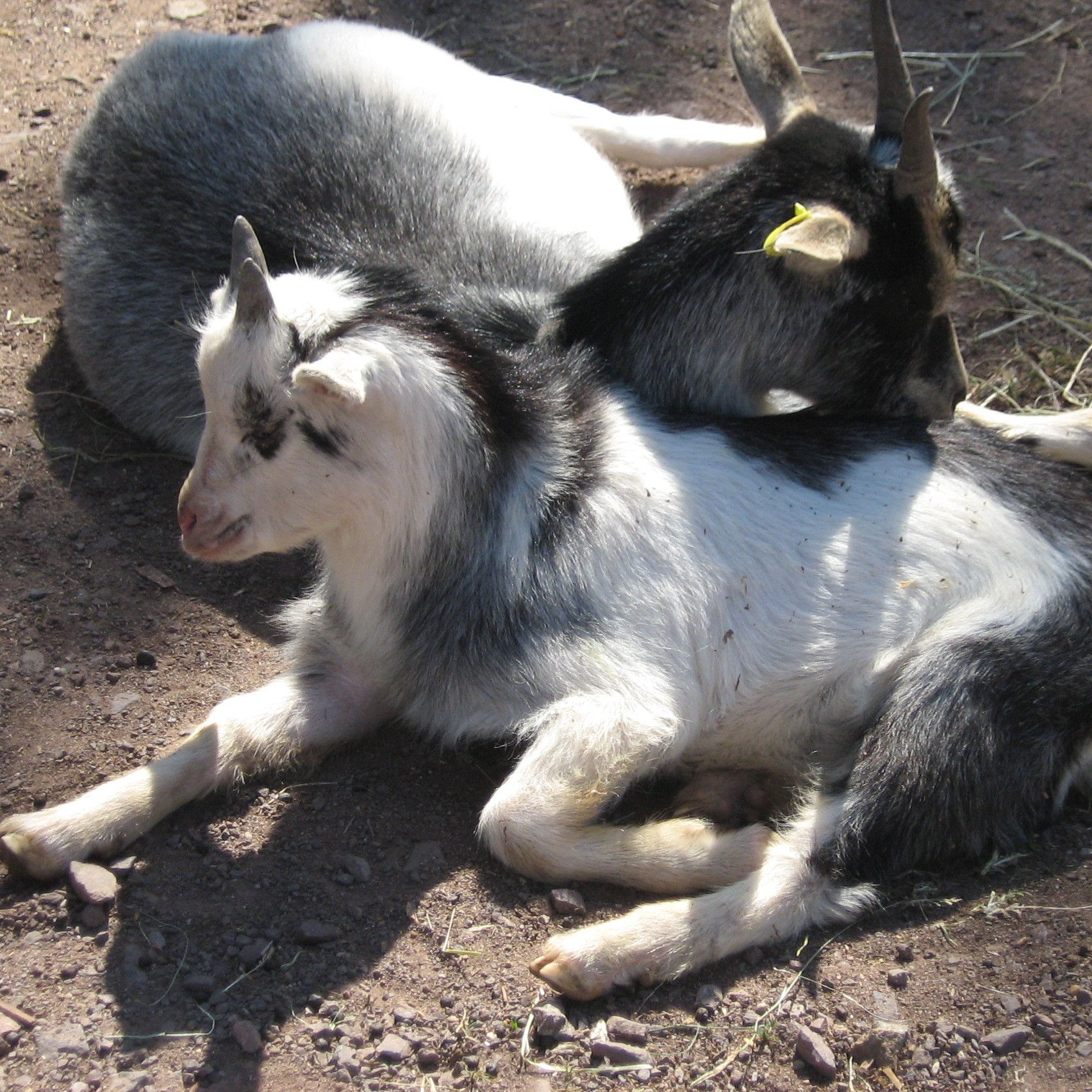
Baby goats are separated from their mothers early in life for economic reasons. Farm animals form strong bonds with their offspring but are not always able to act out their natural instinctive behaviour due to how they are kept, raised and slaughtered for human consumption.


Worldwide farmed animals are often handled by persons who don’t see them as sentient beings, which leads to the animals being treated roughly and not uncommonly even brutally. Additionally, during shearing and combing as well as transport and slaughter the rough handling causes a lot of fear, stress and suffering. This can result in serious injuries and pain for the animals.
Millions of goats suffer greatly as a part of the textile industry. Read more about what’s behind your cashmere and mohair sweaters.


High yielding goats are fed with a high concentrate feed to maintain the unnatural production which causes problems in terms of physiological and mental health (when not being given the possibility to graze and ruminate).

Baby goats are separated from their mothers early in life for economic reasons. Farm animals form strong bonds with their offspring but are not always able to act out their natural instinctive behaviour due to how they are kept, raised and slaughtered for human consumption.


Worldwide farmed animals are often handled by persons who don’t see them as sentient beings, which leads to the animals being treated roughly and not uncommonly even brutally. Additionally, during shearing and combing as well as transport and slaughter the rough handling causes a lot of fear, stress and suffering. This can result in serious injuries and pain for the animals.
Millions of goats suffer greatly as a part of the textile industry. Read more about what’s behind your cashmere and mohair sweaters.


Tethering of farmed animals severely restricts typical behaviour such as movement, social interaction, comfort behaviour and rest behaviour. The animals are not able to determine their activities based on need nor are able to seek out preferred social partners. All of this has a lot of negative effects on their wellbeing status.

Various animal welfare issues lead to severe suffering of the animals during the slaughter process. Read more about it here.
Goats are often transported to countries allowing inappropriate slaughter methods without prior stunning. Read more about it here.

Every year 5.6 million sheep and goats are transported across borders within the EU and to third countries. They are often transported for several days and weeks in disastrous conditions, leading to enormous fear, stress, overheating, injuries and even death. Read all about our transport work here.


Painful interventions, such as disbudding/dehorning or castration, are carried out on goats, mostly without anaesthesia and pain relief – this is deemed necessary by the industry to mitigate the adverse effects of poor husbandry and inappropriate keeping conditions. This needs to end. Keeping systems must be adapted to the animals needs and not vice versa. Read more about common mutilations of goats here.

Chickens
- Mutilations
- Killings of male chicks
- Stocking density in the stalls
- Breeding for extreme performance
- Laying hens in cages
- Live Animal Transport
- Cruel slaugther methods
- Torture breeding
- Cruel handling
- Extreme confinement indoors
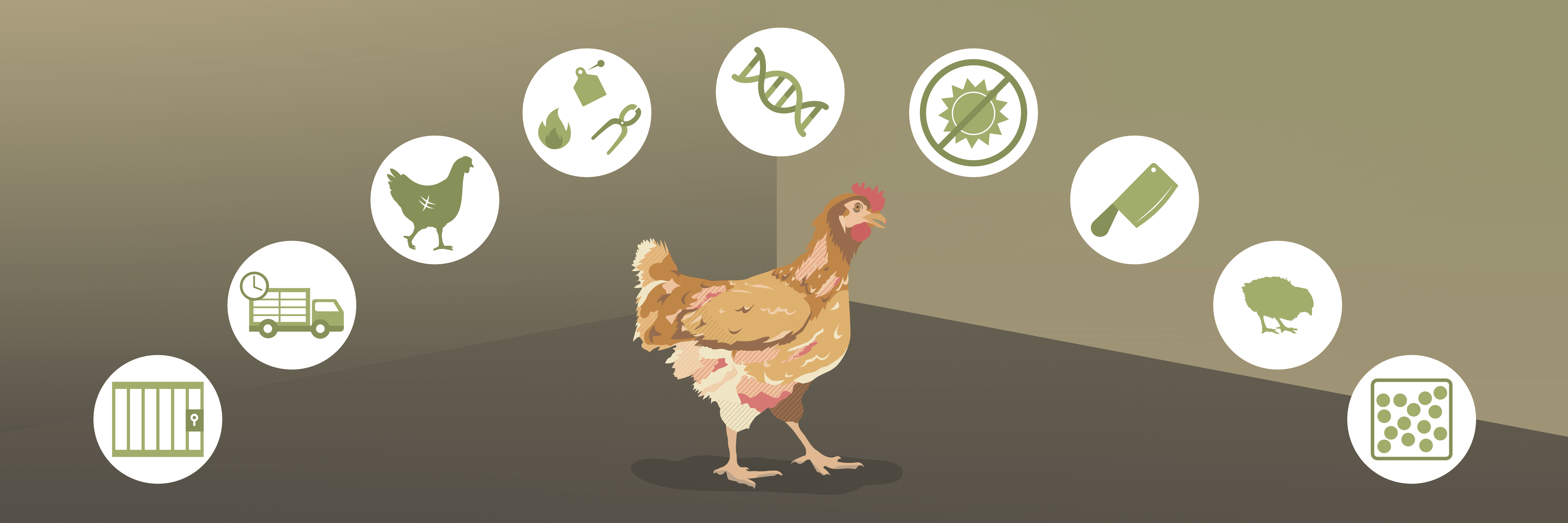
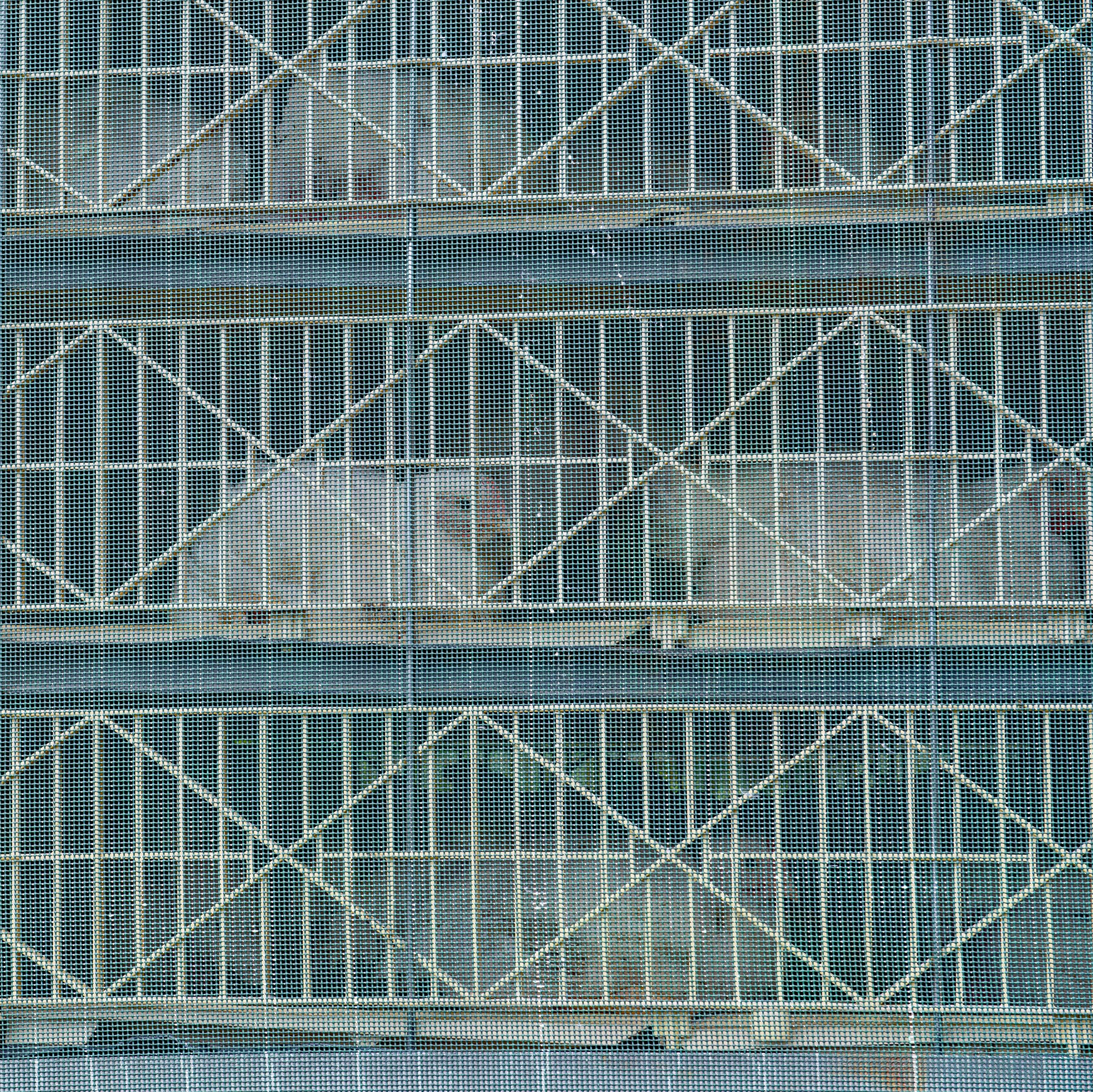
Every year 1,5 billion poultry are transported across borders within the EU and to third countries. They are often transported for several hours, sometimes days in disastrous conditions, leading to enormous fear, stress, overheating, injuries and even death. Read all about our transport work here.

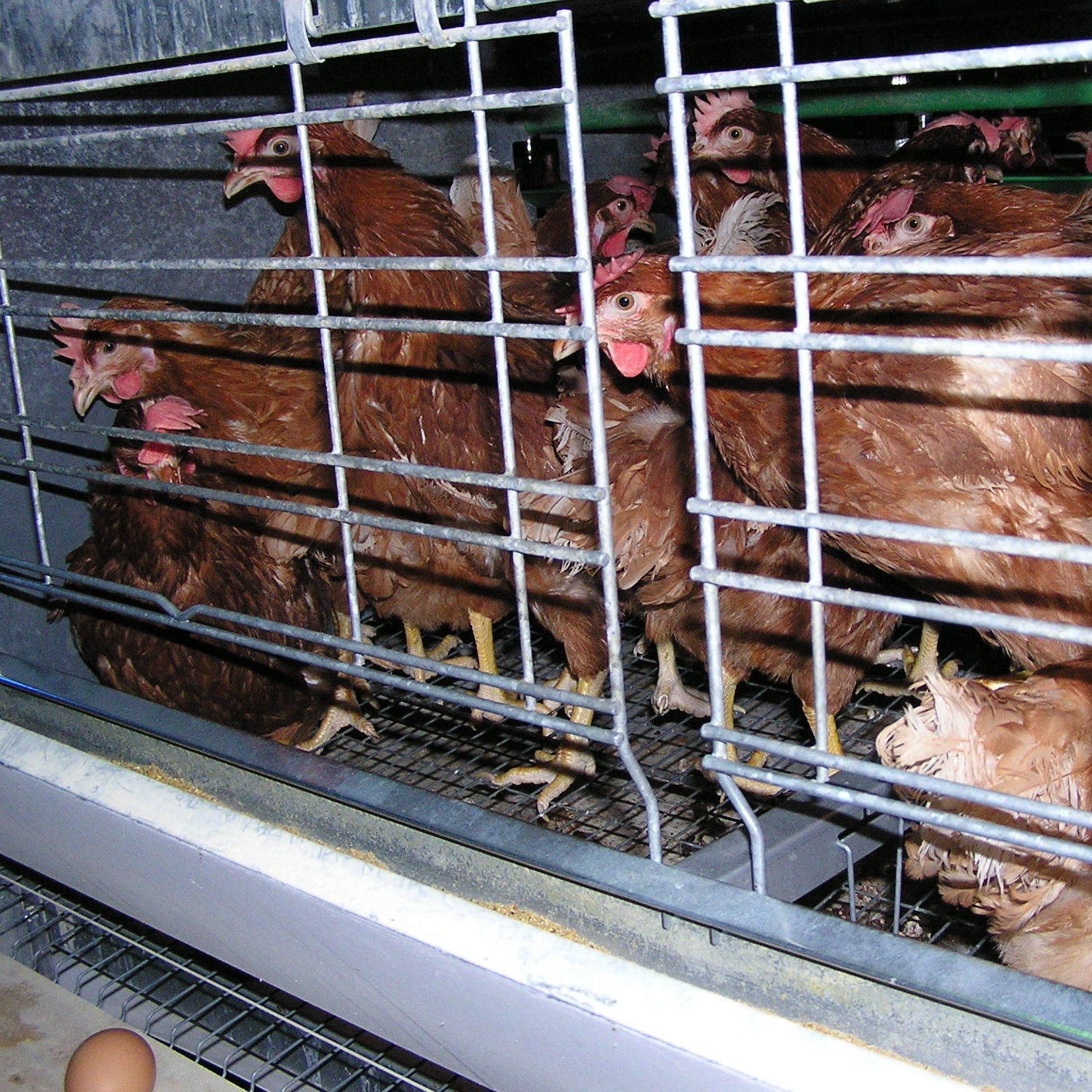
Outside the EU it is still common practice to keep laying hens in tiny cages, crowded together on wire mesh floor, without daylight. They cannot scratch the ground, spread their wings, or sandbathe. Products and eggs out of cage keeping systems are still imported into the EU. Read more about different types of keeping here.


Conventional farm animal breeding aims to adapt the animals to the production conditions. The increase of performance parameters (e.g. laying performance in laying hens, daily weight gains in broilers) is one focus of breeding efforts. This causes pain and suffering, e.g. diseases of laying organs and osteoporosis, sternum damage in laying hens as well as joint deformities, foot pad dermatitis and cardiovascular diseases in broilers. Read more about Torture breeding of chicken here.

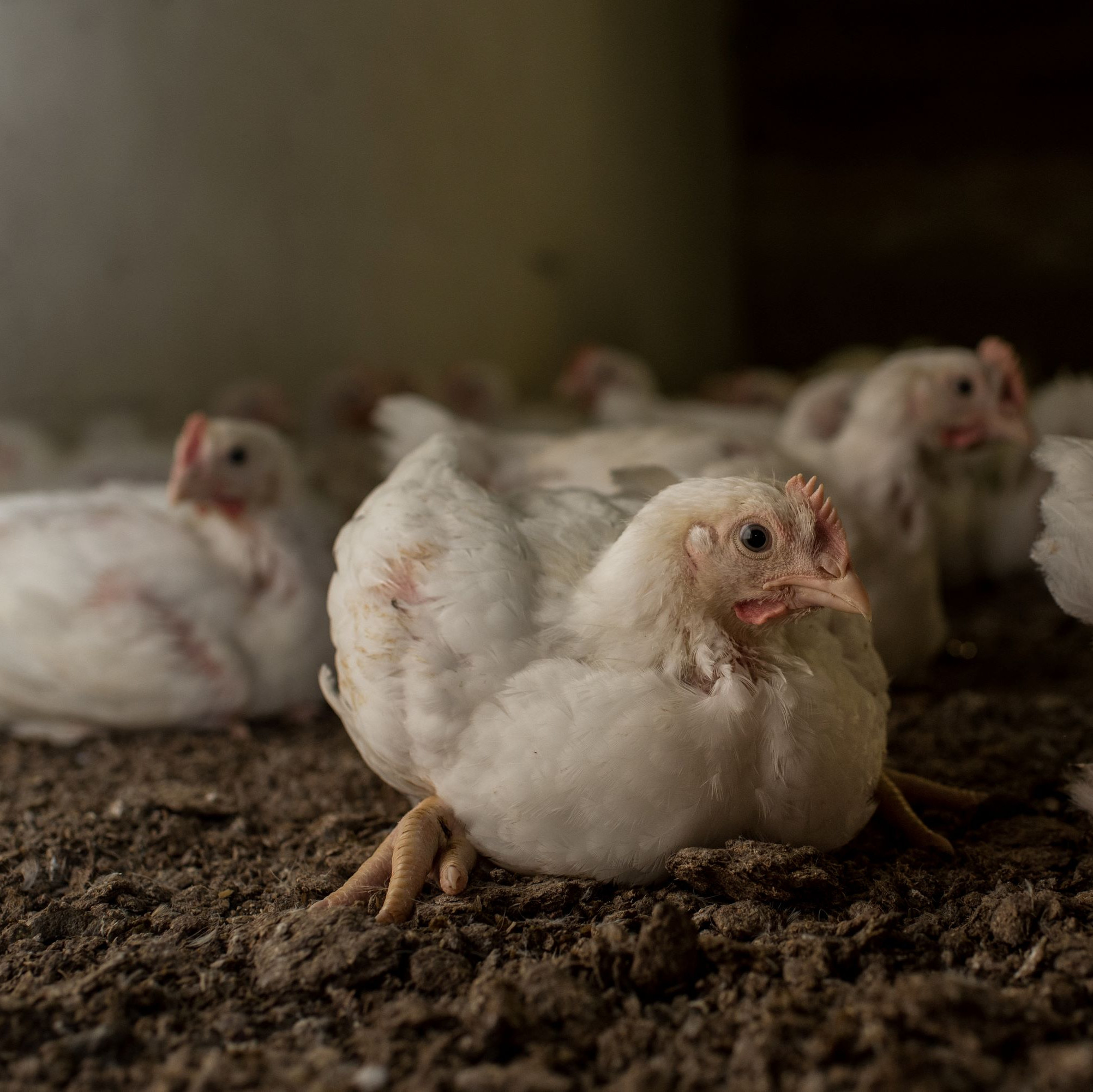
Painful interventions, e.g. beak trimming, are carried out on chickens, mostly without anaesthesia and pain relief – this is deemed necessary by the industry to mitigate the adverse effects of poor husbandry and inappropriate keeping conditions. This needs to end. Keeping systems must be adapted to the animals needs and not vice versa. Read more about common mutilations of chickens here.

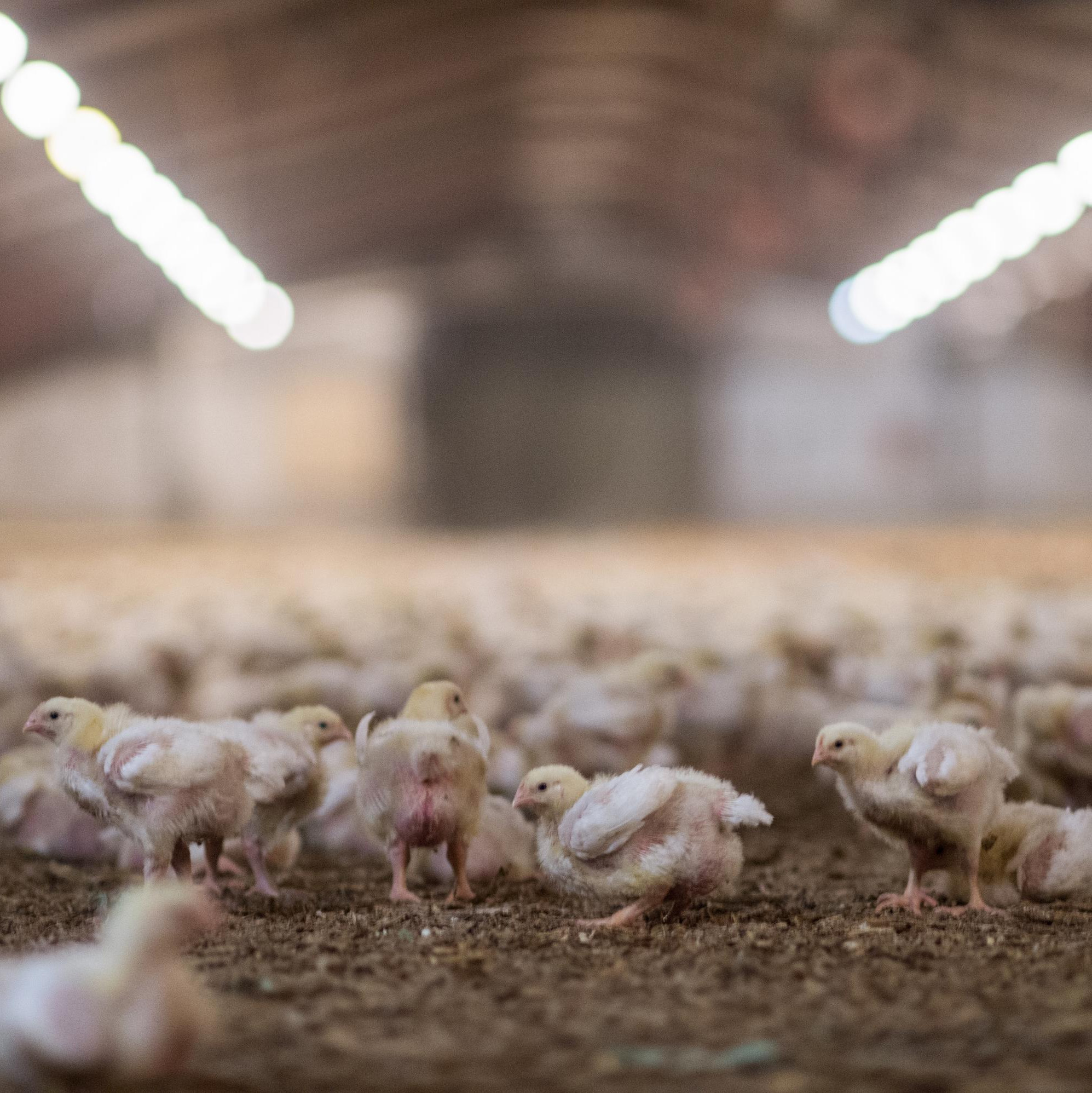
Most chickens are either cramped in tiny cages or kept in overstocked barns. High stocking densities are a cause of crowd-induced stress which can lead to death. High stocking densities also lead to bad air quality, behavioural problems and aggressive behaviour leading to injuries. Read more about different types of keeping laying hens here and about the keeping of broiler chicks here.

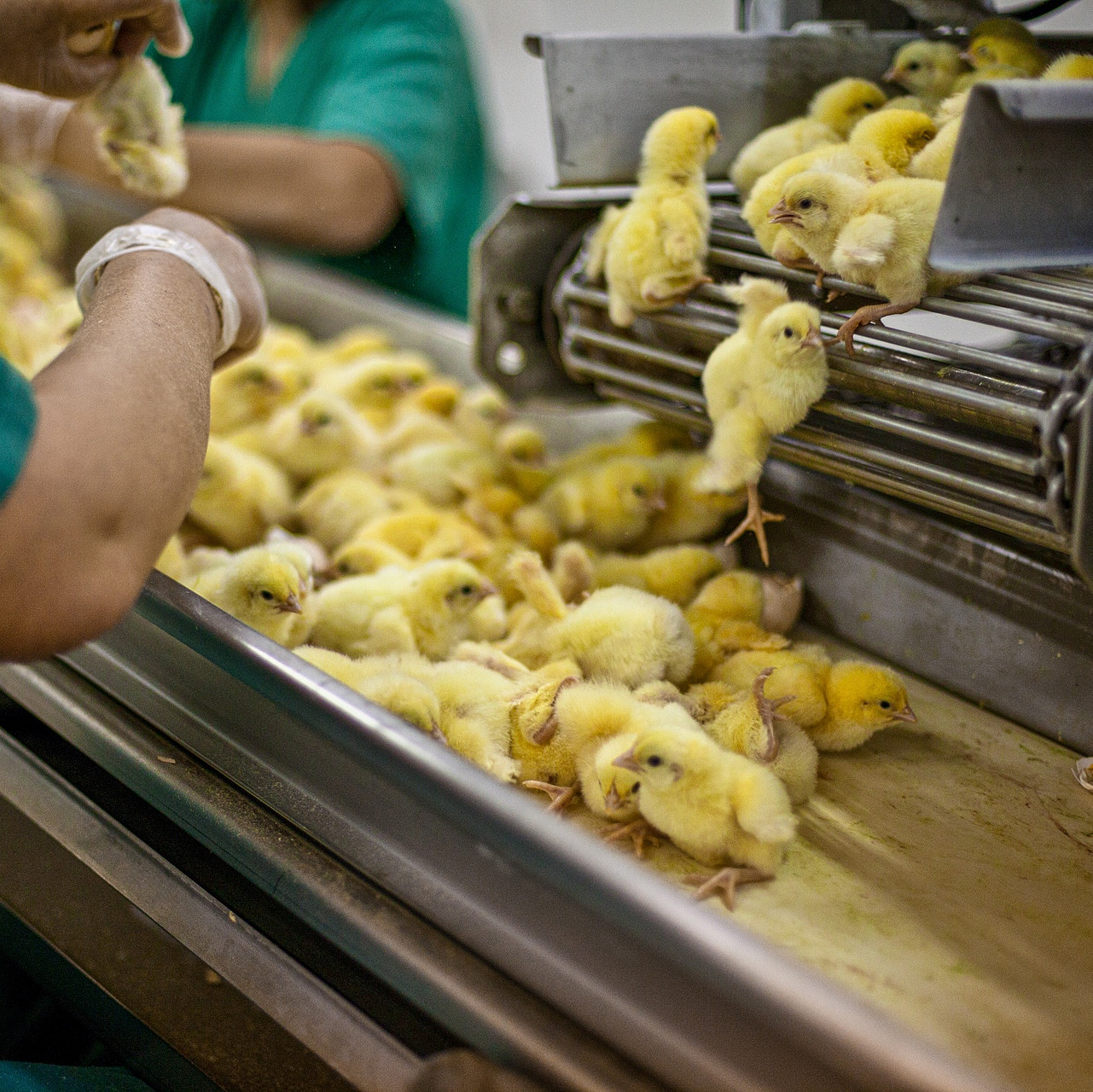
Roosters are generally considered an undesirable by-product in the laying industry. Due to one-sided breeding, from a purely economic point of view, they do not grow fast enough for meat fattening like the extremely high-bred broilers. For this reason, billions of male chicks are killed every year as they are worthless to the egg industry. Read more about it here.


Worldwide farmed animals are often handled by persons who don’t see them as sentient beings, which leads to the animals being treated roughly and not uncommonly even brutally. Additionally, during transport and slaughter the rough handling causes a lot of fear and suffering. This can result in serious injuries and pain for the animals.


In most husbandry systems, chickens are neither able to see the sun, nor to feel grass or soil under their claws – they are kept without any outdoor climatic stimuli. Indoors they need to live in extreme confinement, they suffer under high stocking densities, insufficient space, lacking enrichment and heat stress. This leads to severe behavioural disorders like feather pecking and cannibalism (laying hens) or immobility (broiler chicks).
With laying hens, it happens commonly for various reasons that they accumulate and flock together in a corner causing fatalities through crushing (piling). With broiler chicks it is common that animals are not able to move anymore due to the fast growing and skeletal disorders and are either killed by the stock person or die themselves.


Various animal welfare issues lead to severe suffering of the animals during the slaughter process. Read more about it here.
Chickens are often transported to countries allowing cruel slaughter methods without prior stunning. Read more about it here.



Outside the EU it is still common practice to keep laying hens in tiny cages, crowded together on wire mesh floor, without daylight. They cannot scratch the ground, spread their wings, or sandbathe. Products and eggs out of cage keeping systems are still imported into the EU. Read more about different types of keeping here.


Various animal welfare issues lead to severe suffering of the animals during the slaughter process. Read more about it here.
Chickens are often transported to countries allowing cruel slaughter methods without prior stunning. Read more about it here.


Roosters are generally considered an undesirable by-product in the laying industry. Due to one-sided breeding, from a purely economic point of view, they do not grow fast enough for meat fattening like the extremely high-bred broilers. For this reason, billions of male chicks are killed every year as they are worthless to the egg industry. Read more about it here.


Most chickens are either cramped in tiny cages or kept in overstocked barns. High stocking densities are a cause of crowd-induced stress which can lead to death. High stocking densities also lead to bad air quality, behavioural problems and aggressive behaviour leading to injuries. Read more about different types of keeping laying hens here and about the keeping of broiler chicks here.


Conventional farm animal breeding aims to adapt the animals to the production conditions. The increase of performance parameters (e.g. laying performance in laying hens, daily weight gains in broilers) is one focus of breeding efforts. This causes pain and suffering, e.g. diseases of laying organs and osteoporosis, sternum damage in laying hens as well as joint deformities, foot pad dermatitis and cardiovascular diseases in broilers. Read more about Torture breeding of chicken here.


Outside the EU it is still common practice to keep laying hens in tiny cages, crowded together on wire mesh floor, without daylight. They cannot scratch the ground, spread their wings, or sandbathe. Products and eggs out of cage keeping systems are still imported into the EU. Read more about different types of keeping here.


Every year 1,5 billion poultry are transported across borders within the EU and to third countries. They are often transported for several hours, sometimes days in disastrous conditions, leading to enormous fear, stress, overheating, injuries and even death. Read all about our transport work here.


Worldwide farmed animals are often handled by persons who don’t see them as sentient beings, which leads to the animals being treated roughly and not uncommonly even brutally. Additionally, during transport and slaughter the rough handling causes a lot of fear and suffering. This can result in serious injuries and pain for the animals.



Waterfowl
- No water access
- Force-feeding (foie gras)
- High stocking density in the stalls
- Live feather plucking
- Cage systems
- Keeping of (solitary) Muscovy ducks
- Live Animal Transport
- Mutilations
- Cruel slaughter methods

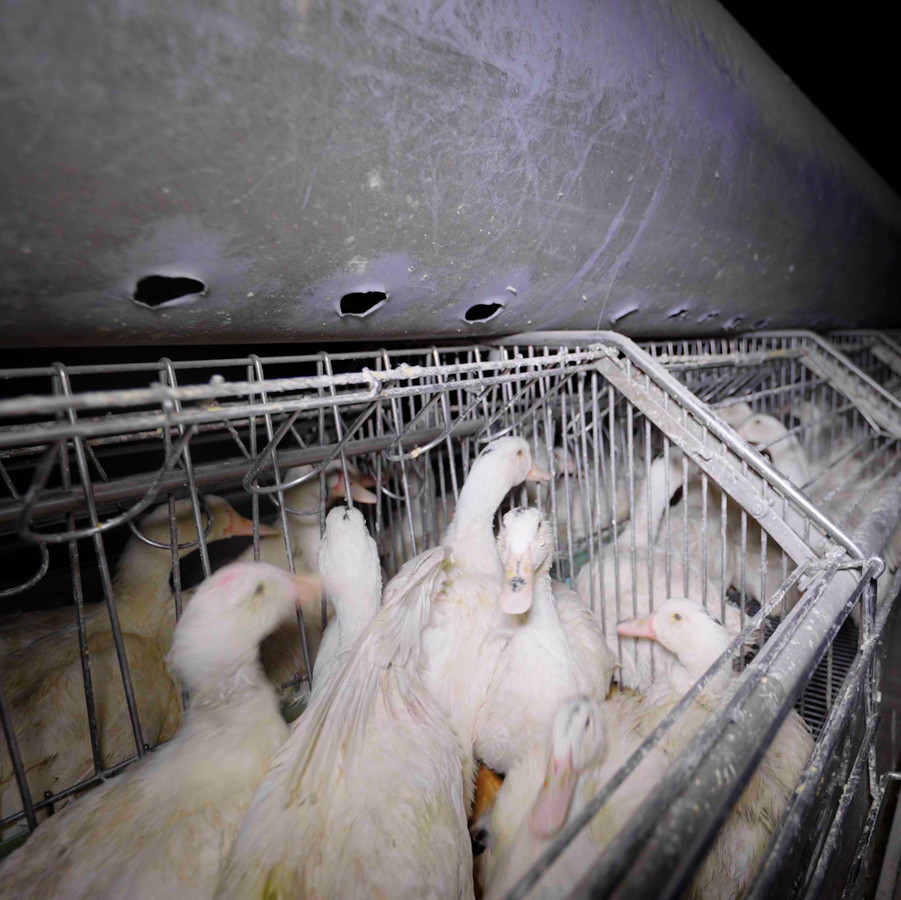
Waterfowl often live in cramped, inappropriate housing systems, on wire mesh floor, without sufficient or any bedding.

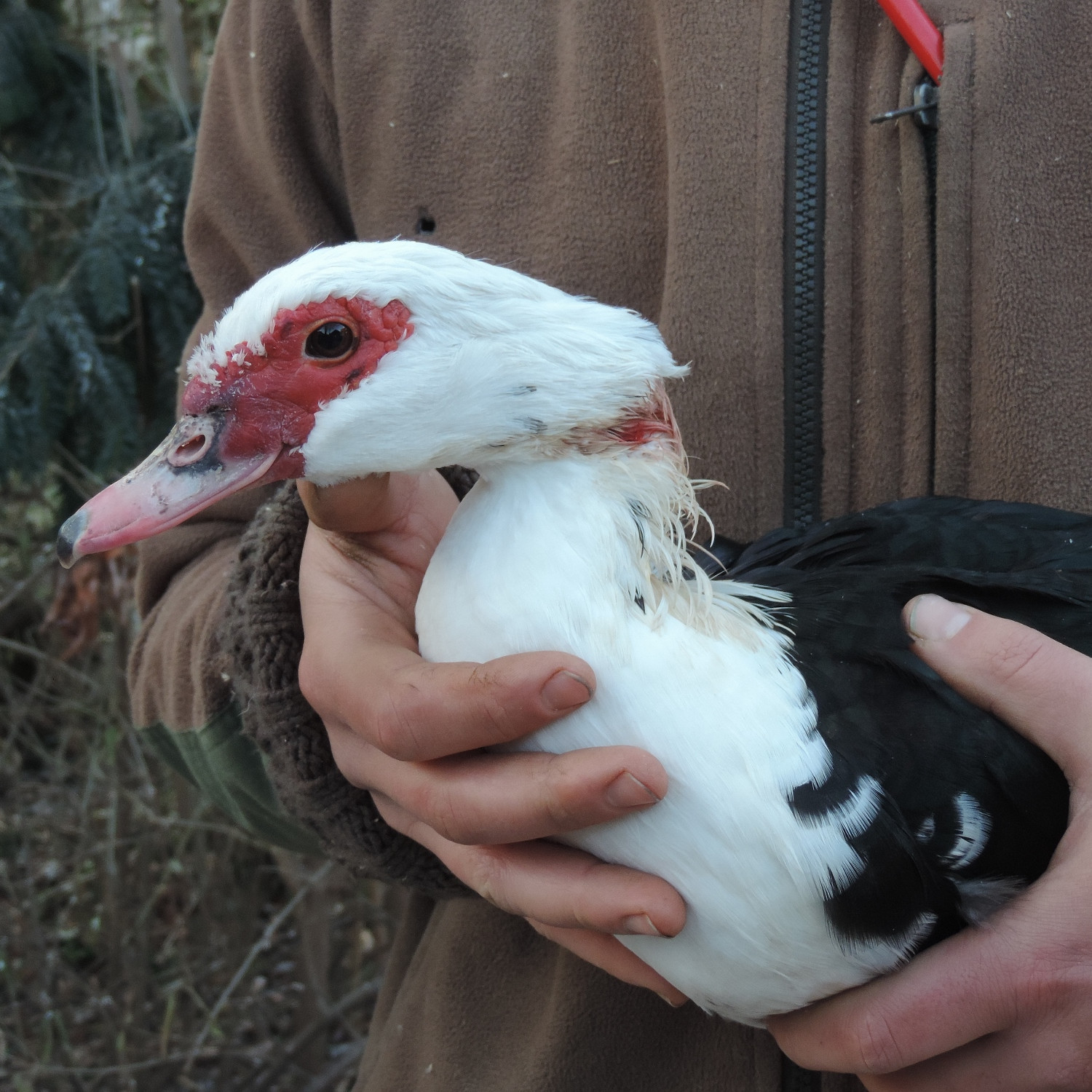
Muscovy ducks are solitary animals and prefer to live in trees and bushes. Their basic needs are not at all met in industrial keeping systems. In general, we believe that no farm animals should be kept in such systems. Looking at their ultimate basic needs, Muscovy ducks cannot be kept commercially in an animal welfare-friendly way. This is why we think they should not be kept on a commercial basis at all.

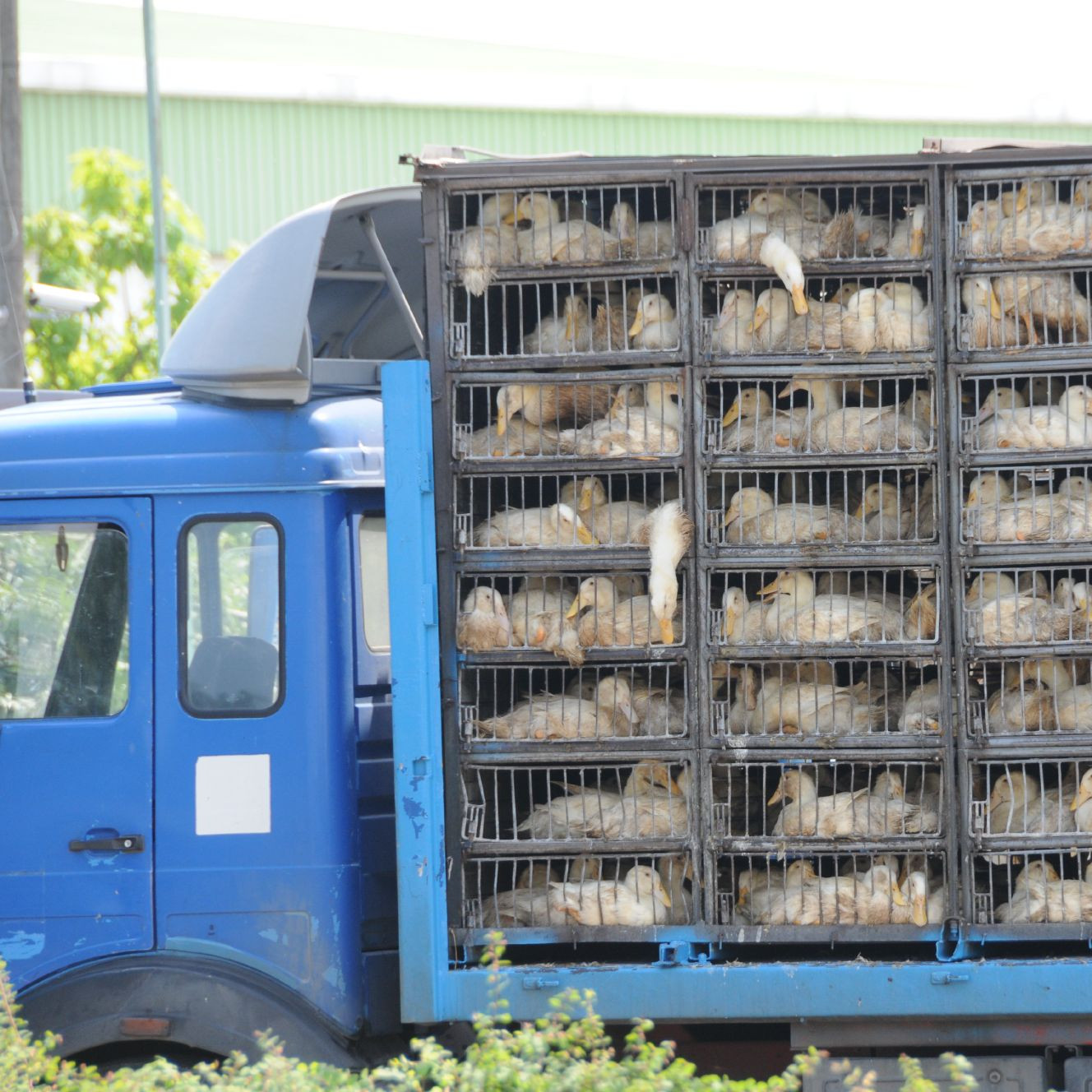
Every year 1.5 billion poultry are transported across borders over long distances. They are often transported for several hours in disastrous conditions, leading to enormous fear, stress, injuries and even death. Read all about our transport work here.

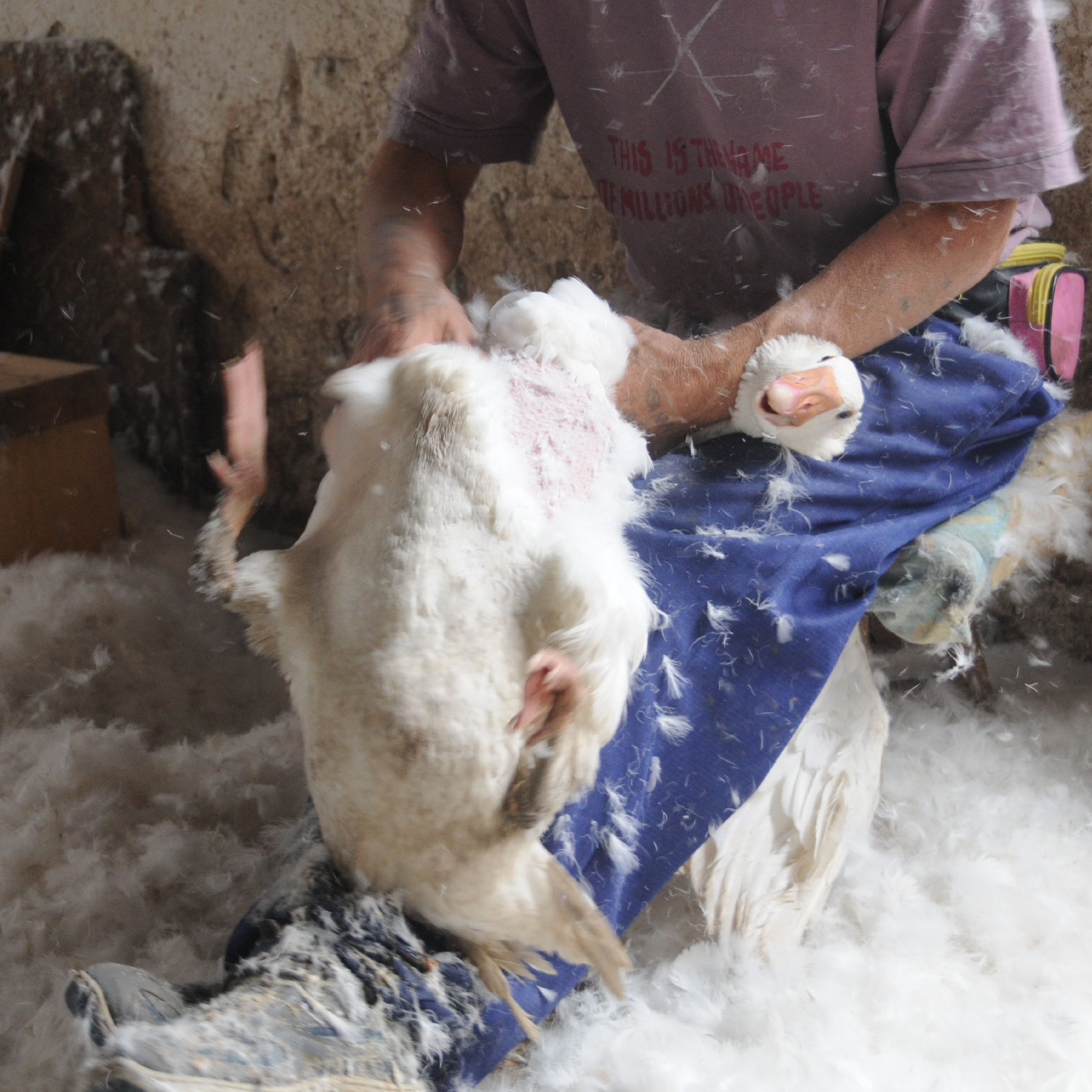
The animals (predominately geese) suffer dreadfully while their feathers and downs are torn out, as workers pluck the animals to produce the most expensive and high quality down. Read more about it here.

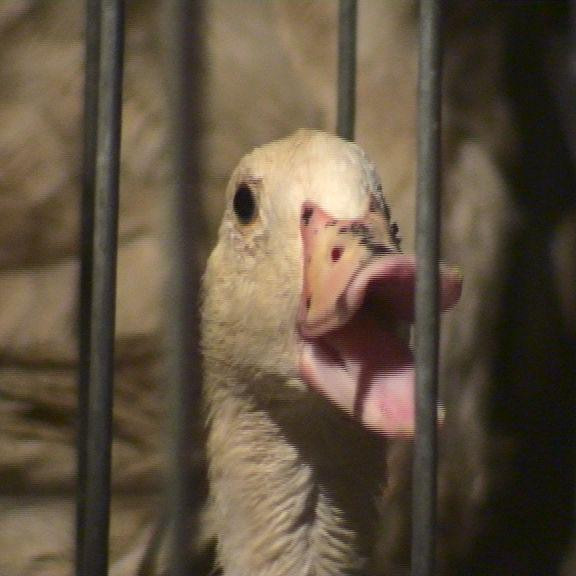
Painful interventions, such as beak trimming, are carried out on waterfowl, mostly without anaesthesia and pain relief - this is deemed necessary by the industry to mitigate the adverse effects of poor husbandry and inappropriate keeping conditions. This needs to end. Keeping systems must be adapted to the animals and not vice versa. Read more about common mutilations of waterfowl here.

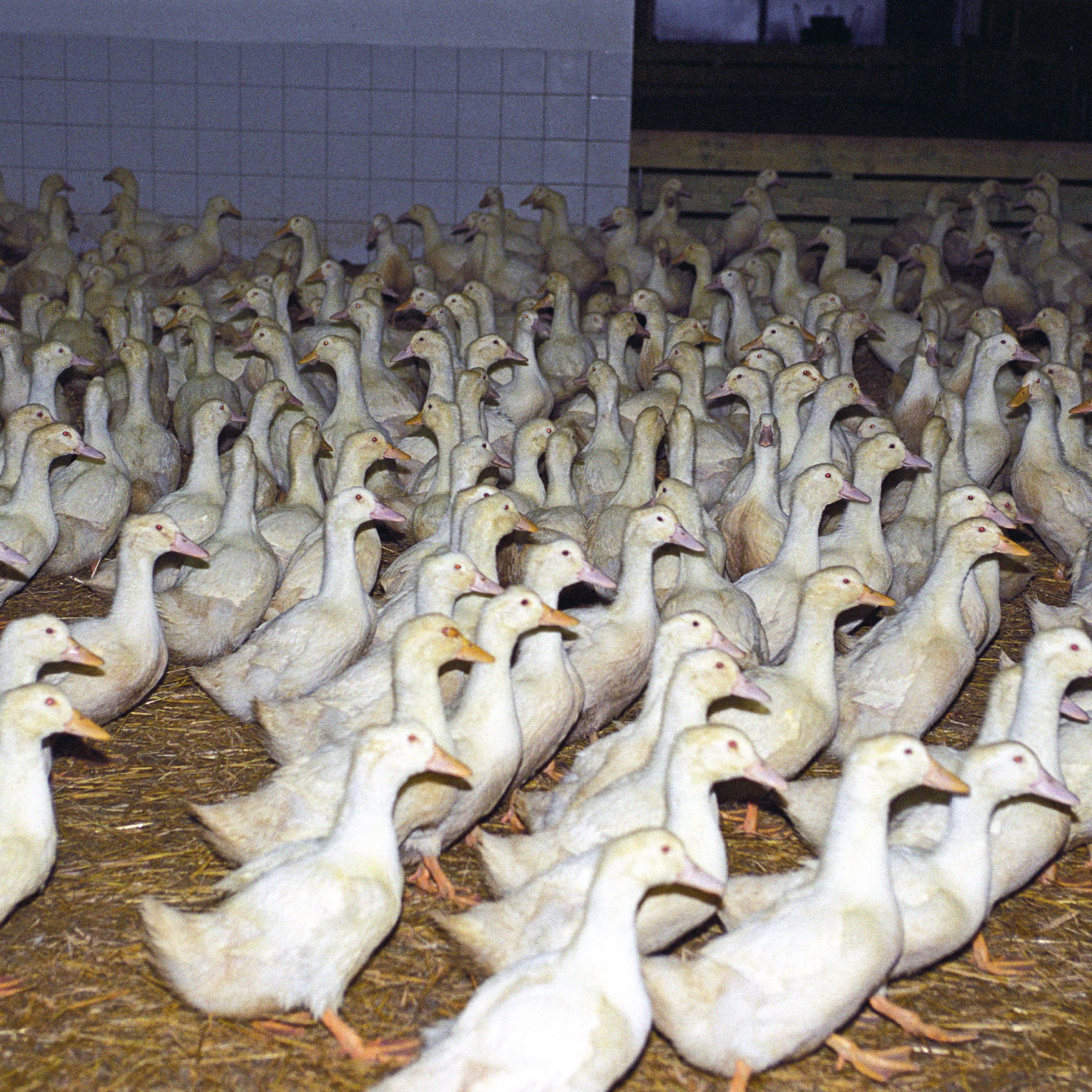
Most waterfowl are either cramped in tiny cages or kept in overstocked barns. High stocking densities are a major problem as crowd-induced stress is a common cause of death.

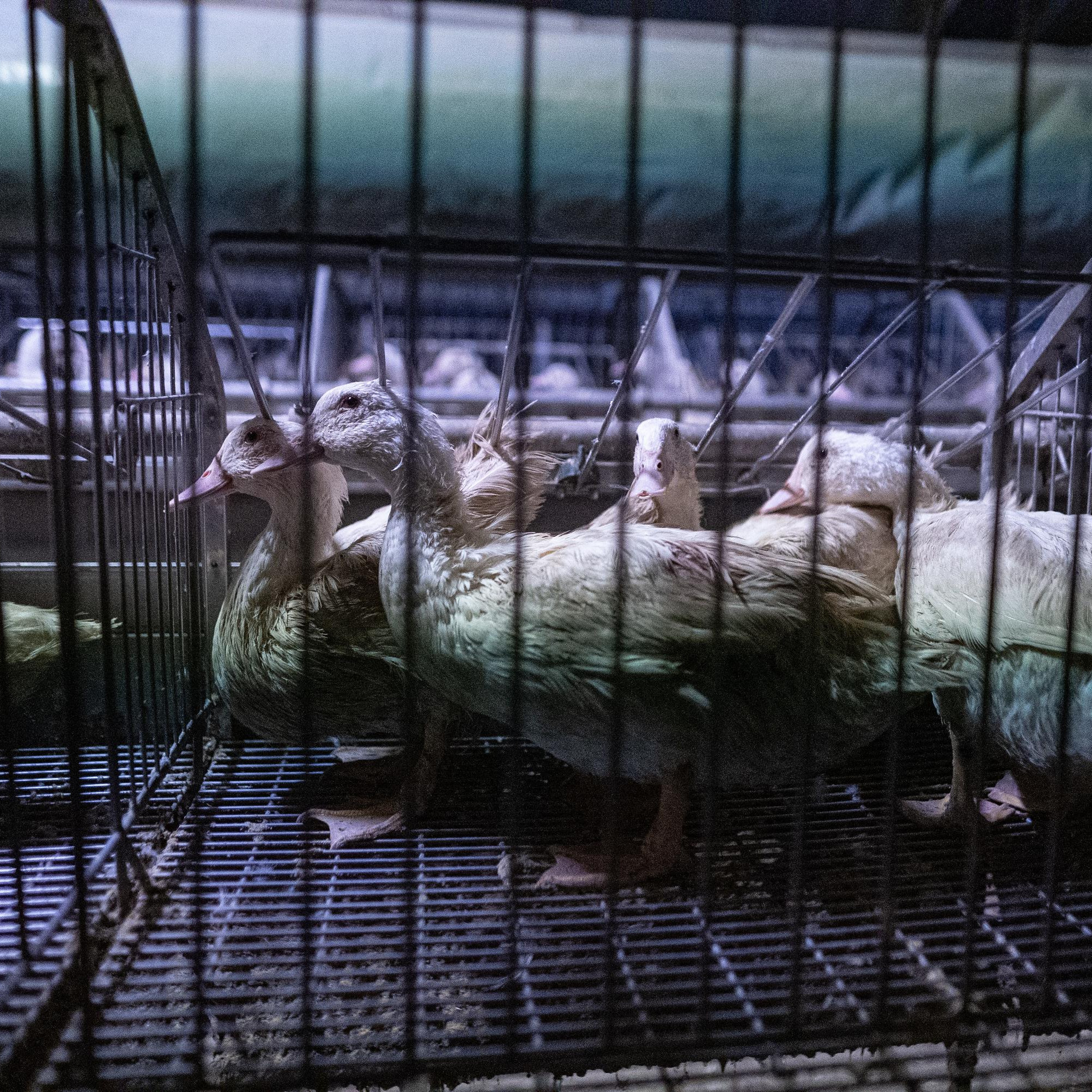
Waterfowl need water to bathe themselves in, however, they are rarely provided with such opportunities in commercial keeping.

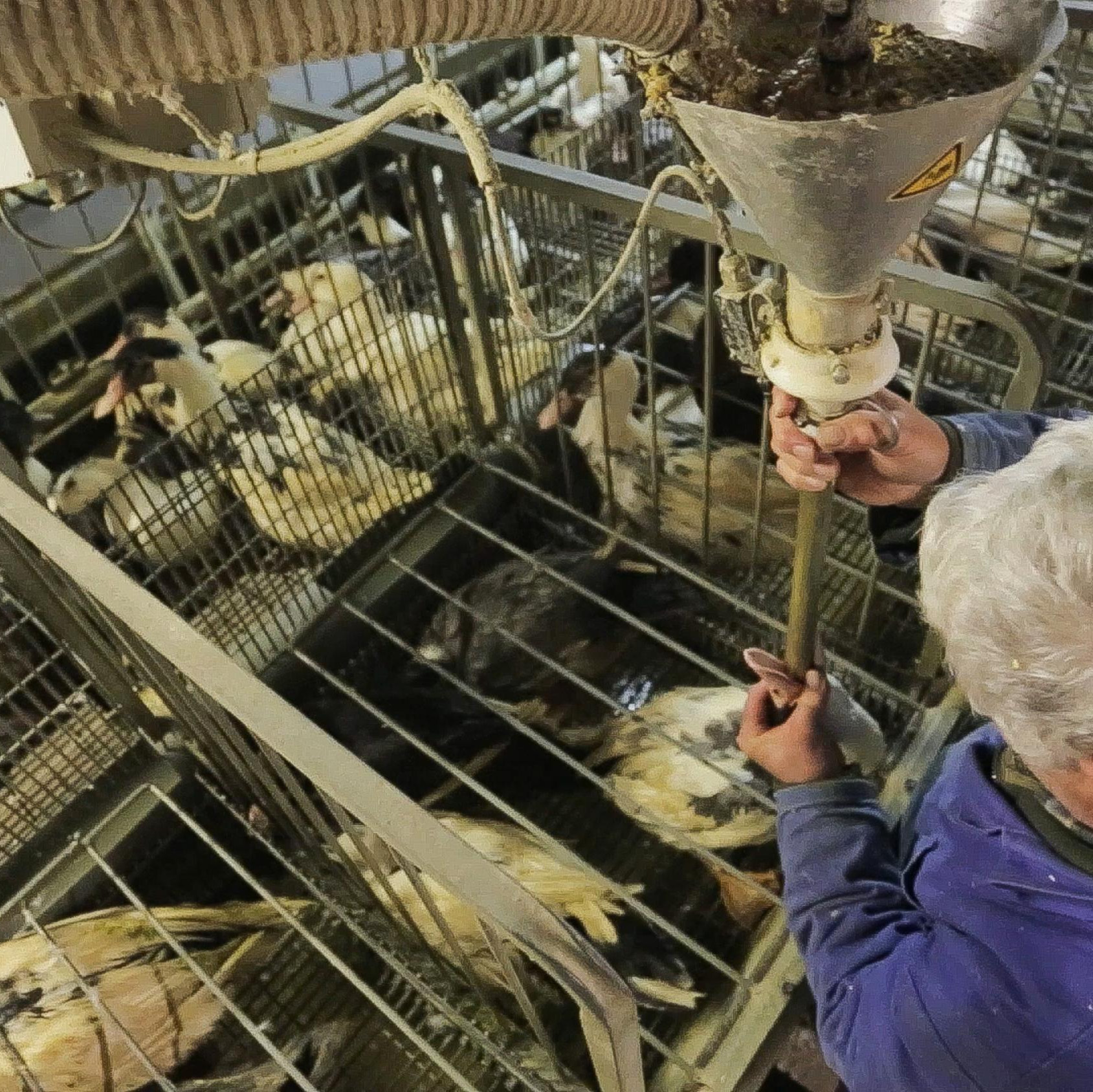
To produce foie gras, a mixture of corn and pure fat is administered through a long pipe, rammed into the oesophagus of the geese and ducks two to three times a day. This is intended to cause rapid weight gain. The liver is then pathologically altered, unable to properly process these large amounts of fat, resulting in abnormal storing of fat. By the end of their lives, the animals can hardly move independently and suffer. This procedure is mainly imposed on males, because their liver is larger. Female animals are often killed instead – just for economic reasons. Read more about foie gras here.


Various animal welfare issues lead to severe suffering of the animals during the slaughter process. Read more about it here.
Waterfowl are often transported to countries allowing inappropriate slaughter methods without prior stunning. Read more about it here.

Waterfowl need water to bathe themselves in, water access is important for performing natural swimming behaviour, comfort behaviour (preening) and for beak hygiene. However, waterfowl are rarely provided with such opportunities in commercial keeping.


The animals (predominately geese) suffer dreadfully while their feathers and downs are torn out, as workers pluck the animals to produce the most expensive and high quality down. Read more about it here.


Most waterfowl are either cramped in tiny cages or kept in overstocked barns. High stocking densities are a major problem as crowd-induced stress is a common cause of death.


To produce foie gras, a mixture of corn and pure fat is administered through a long pipe, rammed into the oesophagus of the geese and ducks two to three times a day. This is intended to cause rapid weight gain. The liver is then pathologically altered, unable to properly process these large amounts of fat, resulting in abnormal storing of fat. By the end of their lives, the animals can hardly move independently and suffer. This procedure is mainly imposed on males, because their liver is larger. Female animals are often killed instead– just for economic reasons. Read more about foie gras here.


Waterfowl often live in cramped, inappropriate housing systems, on wire mesh floor, without sufficient or any bedding.


Muscovy ducks are solitary animals and prefer to live in trees and bushes. Their basic needs are not at all met in industrial keeping systems. In general, we believe that no farm animals should be kept in such systems. Looking at their ultimate basic needs, Muscovy ducks cannot be kept commercially in an animal welfare-friendly way. This is why we think they should not be kept on a commercial basis at all.


Every year 1.5 billion poultry are transported across borders over long distances. They are often transported for several hours in disastrous conditions, leading to enormous fear, stress, injuries and even death. Read all about our transport work here.


Painful interventions, such as beak trimming, are carried out on waterfowl, mostly without anaesthesia and pain relief - this is deemed necessary by the industry to mitigate the adverse effects of poor husbandry and inappropriate keeping conditions. This needs to end. Keeping systems must be adapted to the animals and not vice versa. Read more about common mutilations of waterfowl here.

Turkeys
- Extreme confinement indoors
- Cruel handling
- Mutilations
- Live animal transport
- Cruel slaughter methods
- Torture breeding
- High stocking density in the stalls


In most husbandry systems, turkeys are neither able to see the sun, nor to feel grass or soil under their claws – they are kept without any outdoor climatic stimuli. Indoors they need to live in extreme confinement, they suffer under high stocking densities, insufficient space, lacking enrichment and heat stress. This leads to severe behavioural disorders like feather pecking, cannibalism and immobility. It is common that animals are not able to move anymore due to the fast growing and skeletal disorders, especially towards their end of life.


Worldwide farmed animals are often handled by persons who don’t see them as sentient beings, which leads to the animals being treated roughly and not uncommonly even brutally. Additionally, during transport and slaughter the rough handling causes a lot of fear and suffering. This can result in serious injuries and pain for the animals.


Painful interventions, e.g. beak trimming or de-snooding, are carried out on turkeys, mostly without anaesthesia and pain relief – this is deemed necessary by the industry to mitigate the adverse effects of poor husbandry and inappropriate keeping conditions. This needs to end. Keeping systems must be adapted to the animals needs and not vice versa. Read more about mutilations on turkeys here.


Every year 1.5 billion poultry are transported across borders within the EU and to third countries. They are often transported for several hours, sometimes days in disastrous conditions, leading to enormous fear, stress, overheating, injuries and even death. Read all about our transport work here.

Various animal welfare issues lead to severe suffering of the animals during the slaughter process. Read more about it here.
Turkeys are also transported to countries allowing inappropriate slaughter methods without prior stunning. Read more about it here.

Conventional farm animal breeding aims to adapt the animals to the production conditions. The increase of performance parameters (e.g. daily weight gains) is one focus of breeding efforts. This causes pain and suffering, e.g. joint deformities, sever chest muscle enlargement, foot pad dermatitis and cardiovascular diseases. Read more about Torture breeding of turkey here.


Most turkeys are cramped in overstocked barns. High stocking densities are a cause of crowd-induced stress which can lead to death. High stocking densities also lead to bad air quality, behavioural problems and aggressive behaviour leading to injuries.


Various animal welfare issues lead to severe suffering of the animals during the slaughter process. Read more about it here.
Turkeys are also transported to countries allowing inappropriate slaughter methods without prior stunning. Read more about it here.

Most turkeys are cramped in overstocked barns. High stocking densities are a cause of crowd-induced stress which can lead to death. High stocking densities also lead to bad air quality, behavioural problems and aggressive behaviour leading to injuries.


Conventional farm animal breeding aims to adapt the animals to the production conditions. The increase of performance parameters (e.g. daily weight gains) is one focus of breeding efforts. This causes pain and suffering, e.g. joint deformities, sever chest muscle enlargement, foot pad dermatitis and cardiovascular diseases. Read more about Torture breeding of turkey here.


Every year 1.5 billion poultry are transported across borders within the EU and to third countries. They are often transported for several hours, sometimes days in disastrous conditions, leading to enormous fear, stress, overheating, injuries and even death. Read all about our transport work here.


Worldwide farmed animals are often handled by persons who don’t see them as sentient beings, which leads to the animals being treated roughly and not uncommonly even brutally. Additionally, during transport and slaughter the rough handling causes a lot of fear and suffering. This can result in serious injuries and pain for the animals.


In most husbandry systems, turkeys are neither able to see the sun, nor to feel grass or soil under their claws – they are kept without any outdoor climatic stimuli. Indoors they need to live in extreme confinement, they suffer under high stocking densities, insufficient space, lacking enrichment and heat stress. This leads to severe behavioural disorders like feather pecking, cannibalism and immobility. It is common that animals are not able to move anymore due to the fast growing and skeletal disorders, especially towards their end of life.


Painful interventions, e.g. beak trimming or de-snooding, are carried out on turkeys, mostly without anaesthesia and pain relief – this is deemed necessary by the industry to mitigate the adverse effects of poor husbandry and inappropriate keeping conditions. This needs to end. Keeping systems must be adapted to the animals needs and not vice versa. Read more about mutilations on turkeys here.

Rabbits
- Torture breeding
- Cruel handling
- Wire mesh flooring
- Cage systems
- Live animal transport
- Mutilations
- Extreme confinement indoors
- Cruel slaughter methods
- Single keeping of breeding rabbits

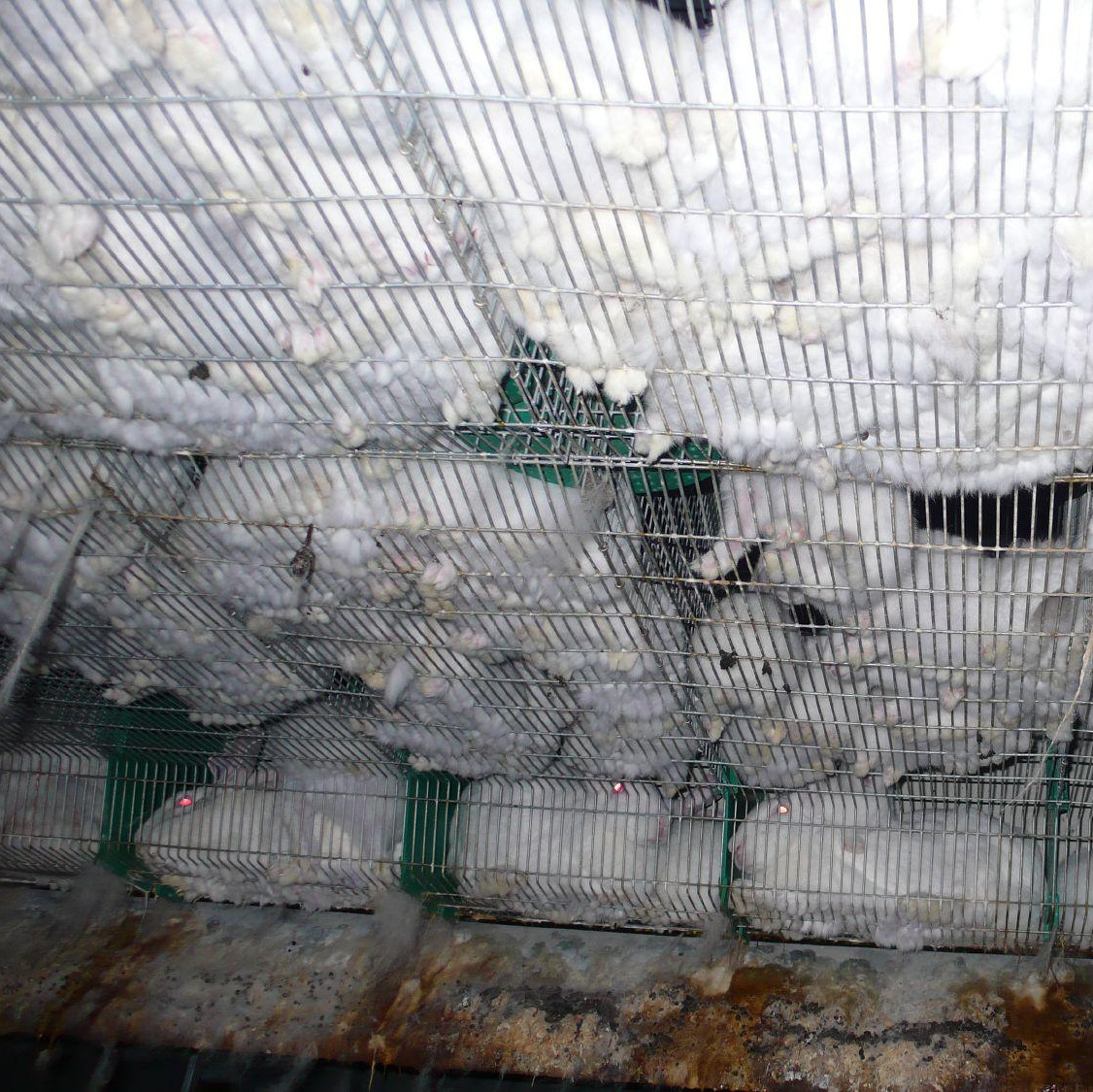
The wire mesh flooring is keeping the rabbits from performing their innate behaviour of digging and it often causes serious injuries to the paws or legs. If the wounds become infected, serious complications can occur. Read more about farmed rabbits here.

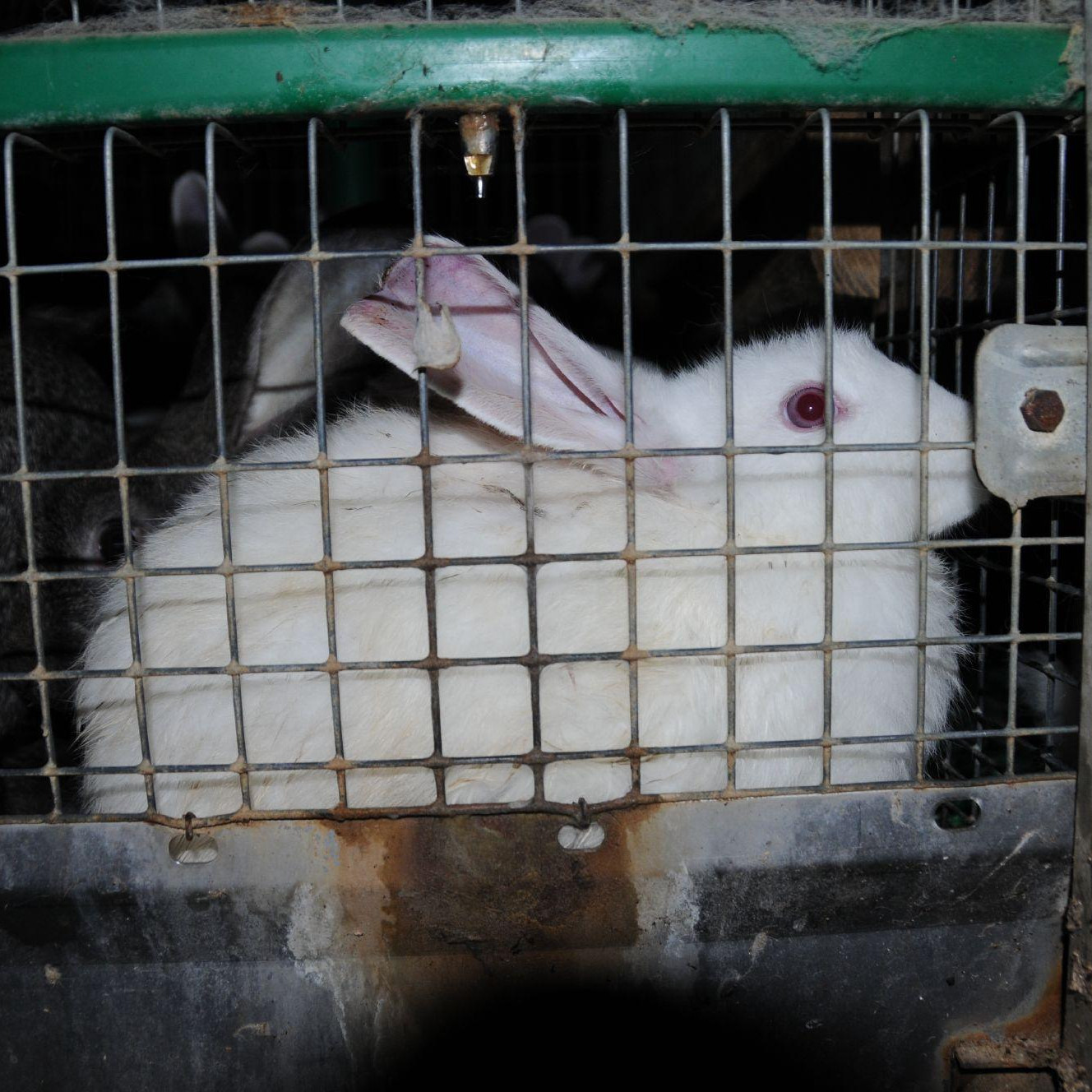
Natural behaviour is impossible in a cage and due to the narrowness and the very high number of animals per cage, the rabbits, who normally enjoy running around, digging into the ground and gnawing on branches and scrubs, are doomed to immobility. Read more about farmed rabbits here.


Every year billions of farmed animals and also rabbits are transported over long distances across borders. Within the EU they are often transported for hours in disastrous conditions, leading to enormous fear, stress, injuries and even death. Read all about our transport work here.

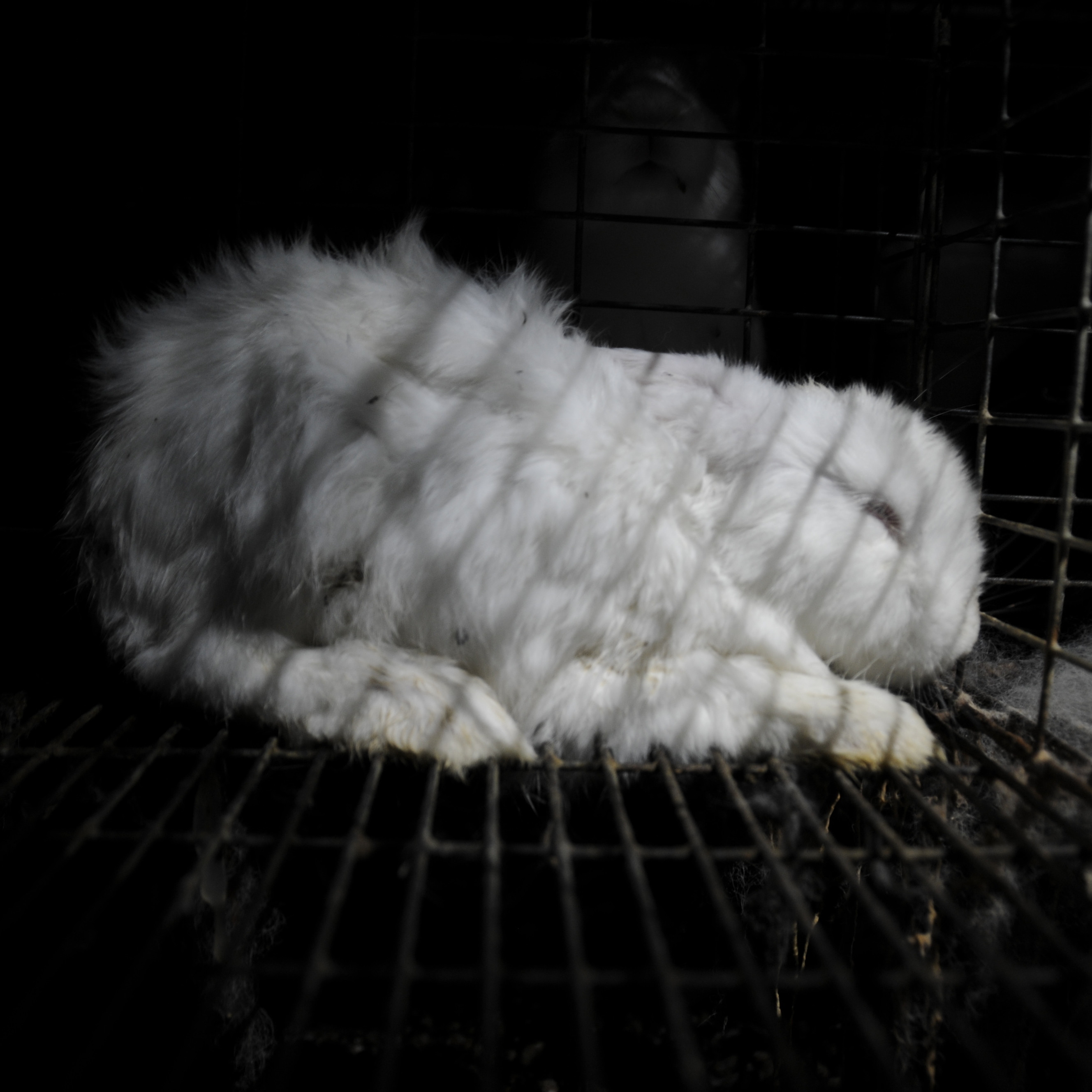
Angora rabbits are intentionally bred to have excessive fluffy wool which compromises their welfare and health. There is no cruelty-free way of keeping Angora rabbits. Read more about it here.

Painful interventions, such as setting ear marks, are carried out on rabbits, mostly without anaesthesia and pain relief. Read more about mutilations here.

In factory rabbit keeping systems, they neither see the sun nor get the possibility to dig in the ground. They are kept without any outdoor climatic stimuli. Indoors they need to live in extreme confinement, suffering under high stocking densities, insufficient space and lacking enrichment. This often leads to severe behavioural disorders.

Various animal welfare issues lead to severe suffering of the animals during the slaughter process. Read more about it here.

Mother rabbits spend their short lives as birthing machines in breeding cages and suffer under serious injuries to the paws and legs as well as curvature of the spine. This keeping system also restricts natural and social behaviour which often leads to aggressions towards their offspring. Not only mother rabbits, but also male breeding rabbits suffer from single keeping. Read more about the suffering of rabbits in cages here.


Worldwide farmed animals are often handled by persons who don’t see them as sentient beings, which leads to the animals being treated roughly and not uncommonly even brutally. Additionally, during shearing and combing as well as during transport and slaughter the rough handling causes a lot of fear and suffering. This can result in serious injuries, pain and even heart attacks due to stress for the rabbits. They suffer greatly as a part of the textile industry, read more about what’s behind Angora wool.



In factory rabbit keeping systems, they neither see the sun nor get the possibility to dig in the ground. They are kept without any outdoor climatic stimuli. Indoors they need to live in extreme confinement, suffering under high stocking densities, insufficient space and lacking enrichment. This often leads to severe behavioural disorders.

Various animal welfare issues lead to severe suffering of the animals during the slaughter process. Read more about it here.

Angora rabbits are intentionally bred to have excessive fluffy wool which compromises their welfare and health. There is no cruelty-free way of keeping Angora rabbits. Read more about it here.


Worldwide farmed animals are often handled by persons who don’t see them as sentient beings, which leads to the animals being treated roughly and not uncommonly even brutally. Additionally, during shearing and combing as well as during transport and slaughter the rough handling causes a lot of fear and suffering. This can result in serious injuries, pain and even heart attacks due to stress for the rabbits. They suffer greatly as a part of the textile industry, read more about what’s behind Angora wool.


Mother rabbits spend their short lives as birthing machines in breeding cages and suffer under serious injuries to the paws and legs as well as curvature of the spine. This keeping system also restricts natural and social behaviour which often leads to aggressions towards their offspring. Not only mother rabbits, but also male breeding rabbits suffer from single keeping. Read more about the suffering of rabbits in cages here.


The wire mesh flooring is keeping the rabbits from performing their innate behaviour of digging and it often causes serious injuries to the paws or legs. If the wounds become infected, serious complications can occur. Read more about farmed rabbits here.


Natural behaviour is impossible in a cage and due to the narrowness and the very high number of animals per cage, the rabbits, who normally enjoy running around, digging into the ground and gnawing on branches and scrubs, are doomed to immobility. Read more about farmed rabbits here.

Painful interventions, such as setting ear marks, are carried out on rabbits, mostly without anaesthesia and pain relief. Read more about mutilations here.

Every year billions of farmed animals and also rabbits are transported over long distances across borders. Within the EU they are often transported for hours in disastrous conditions, leading to enormous fear, stress, injuries and even death. Read all about our transport work here.

Source
2. De Paula Vieira A, von Keyserlingk MAG, Weary DM. Effects of pair versus single housing on performance and behavior of dairy calves before and after weaning from milk. Journal of Dairy Science. 2010;93(7):3079–3085. doi:10.3168/jds.2009-2516
3. Grandin T. Evaluation of the welfare of cattle housed in outdoor feedlot pens. Veterinary and Animal Science. 2016;1–2:23–28. doi:10.1016/j.vas.2016.11.001
4. Gray H, Davies R, Bright A, Rayner A, Asher L. Why Do Hens Pile? Hypothesizing the Causes and Consequences. Frontiers in Veterinary Science. 2020;7:616836. doi:10.3389/fvets.2020.616836
5. Lee C, Fisher AD. Welfare consequences of mulesing of sheep. Australian Veterinary Journal. 2007;85(3):89–93. doi:10.1111/j.1751-0813.2007.00114.x

